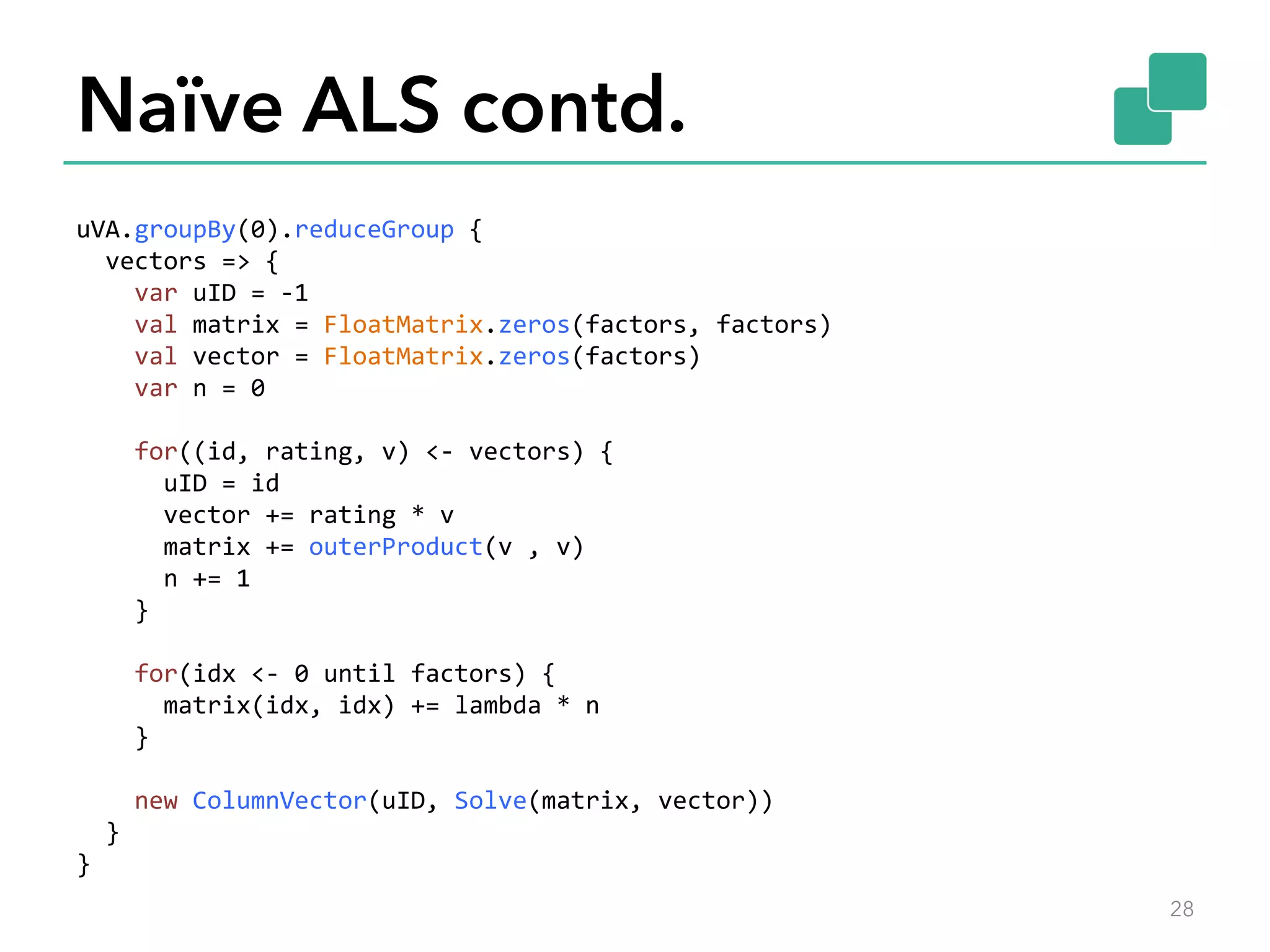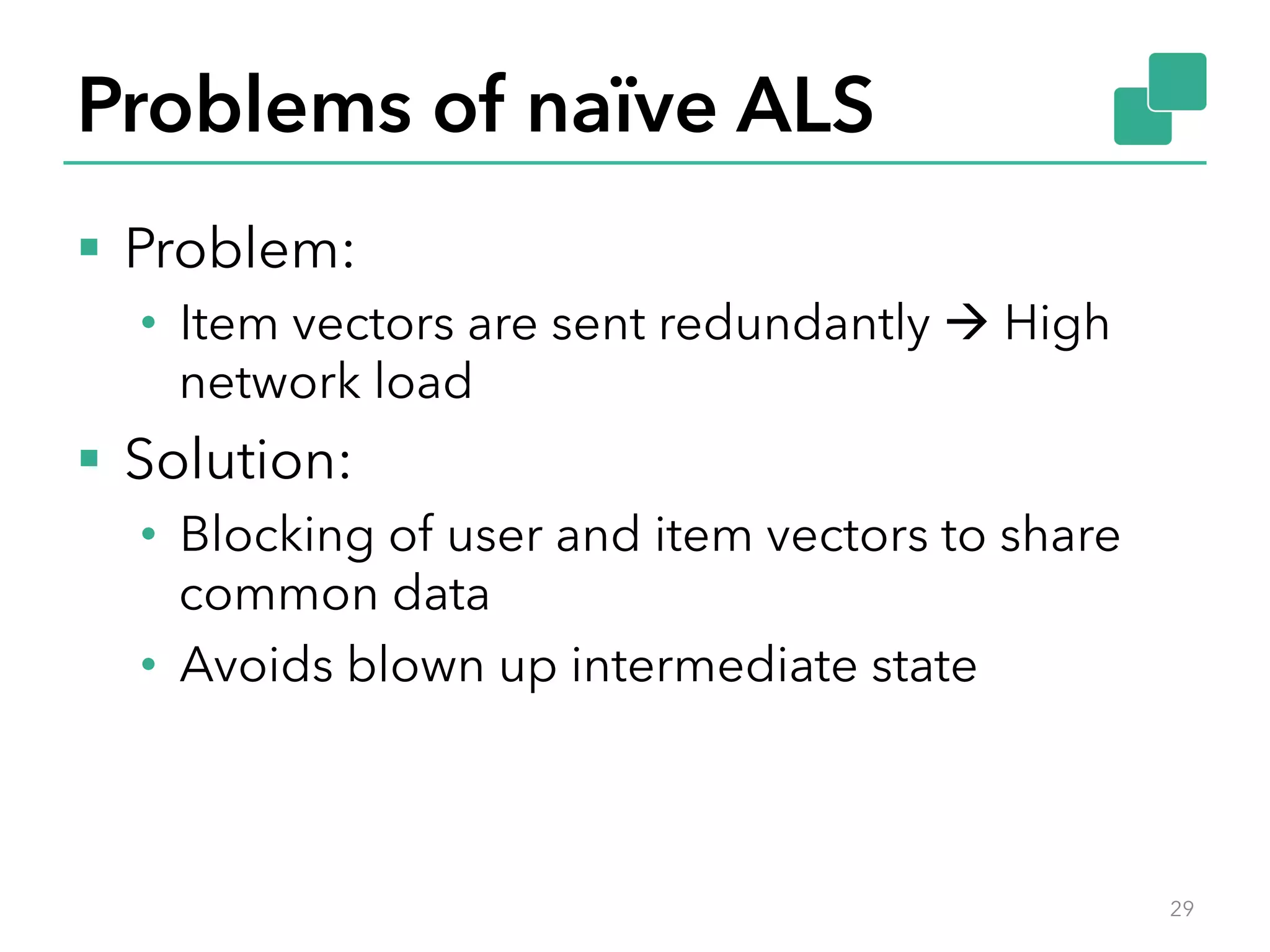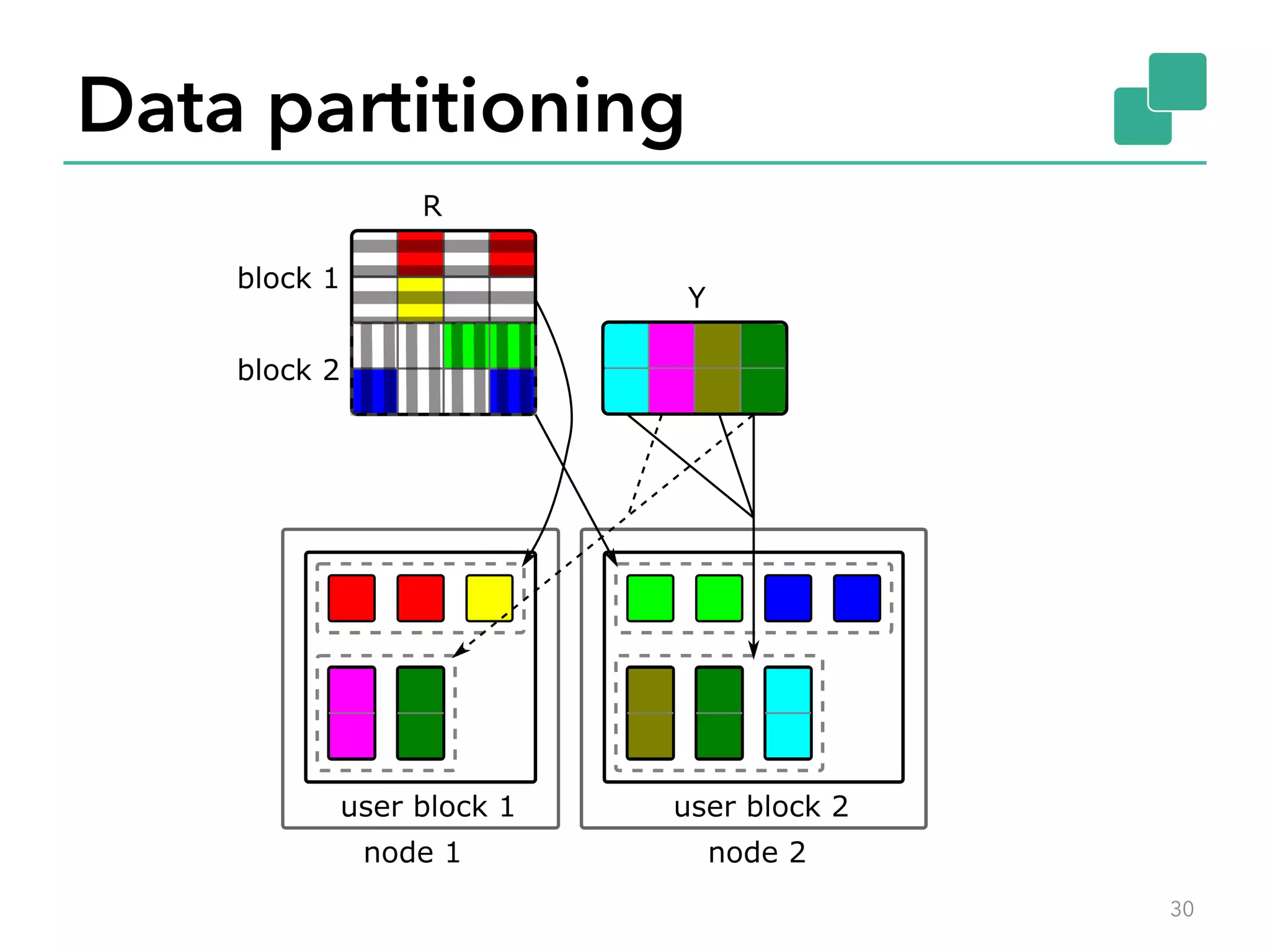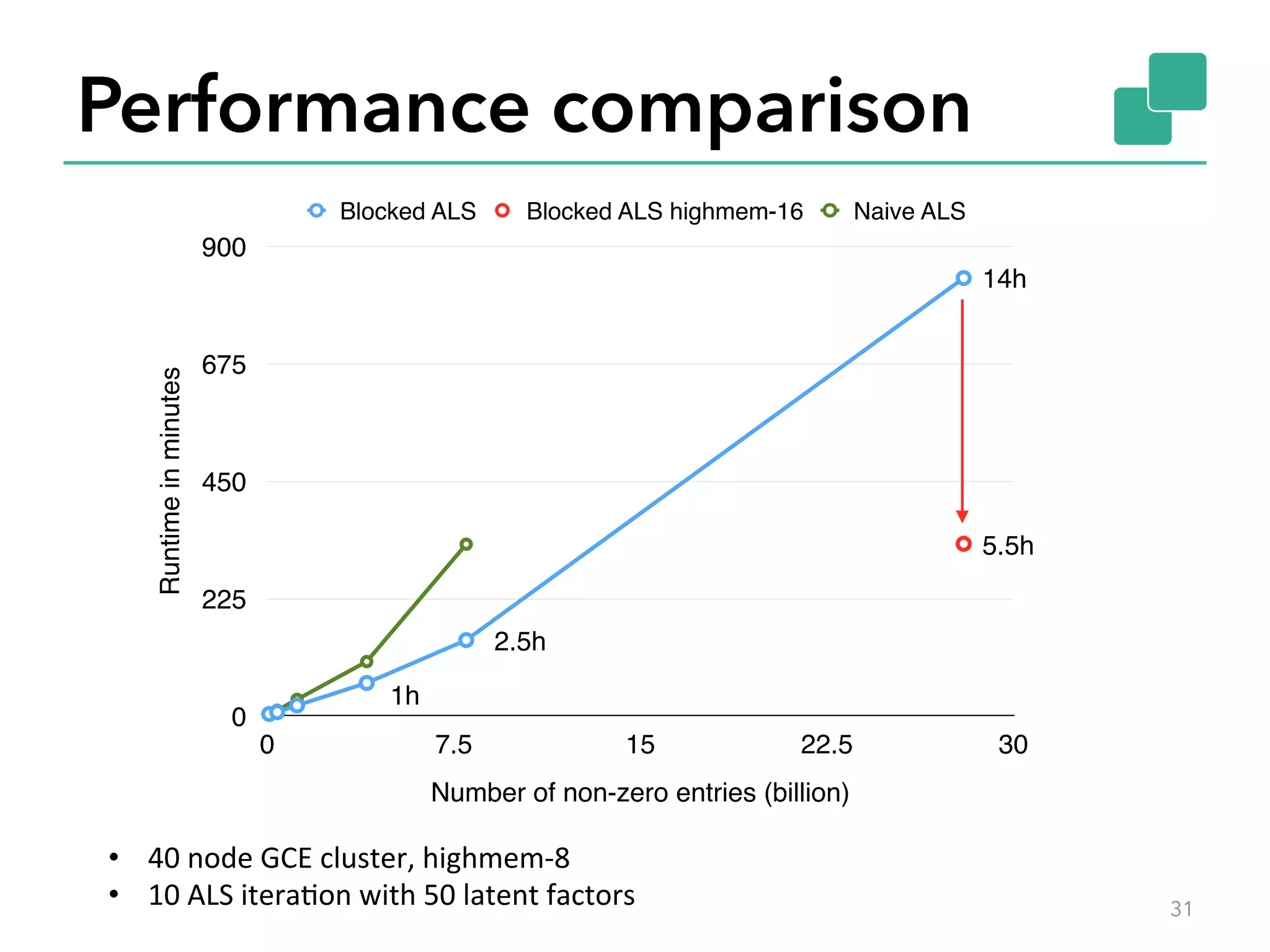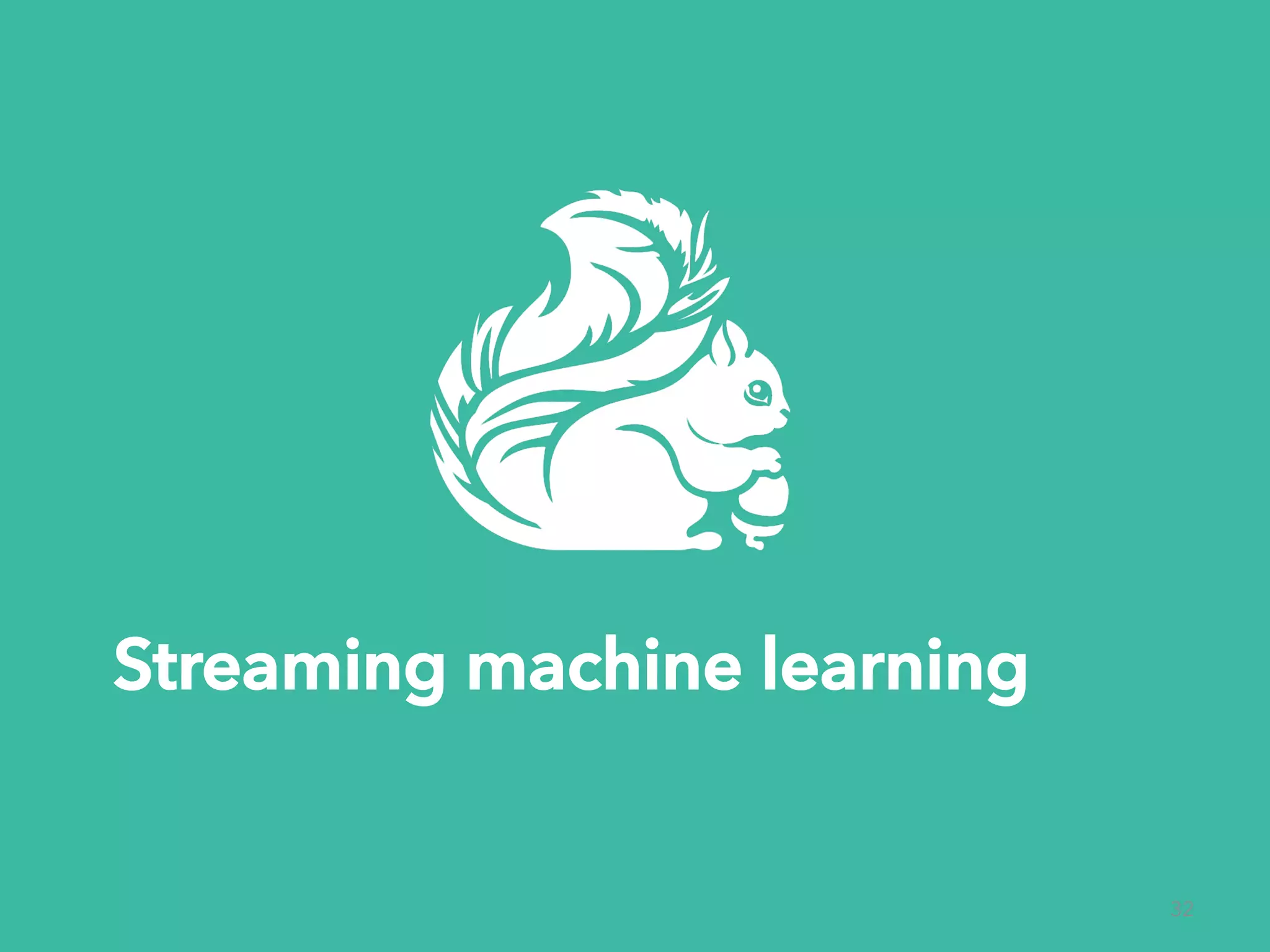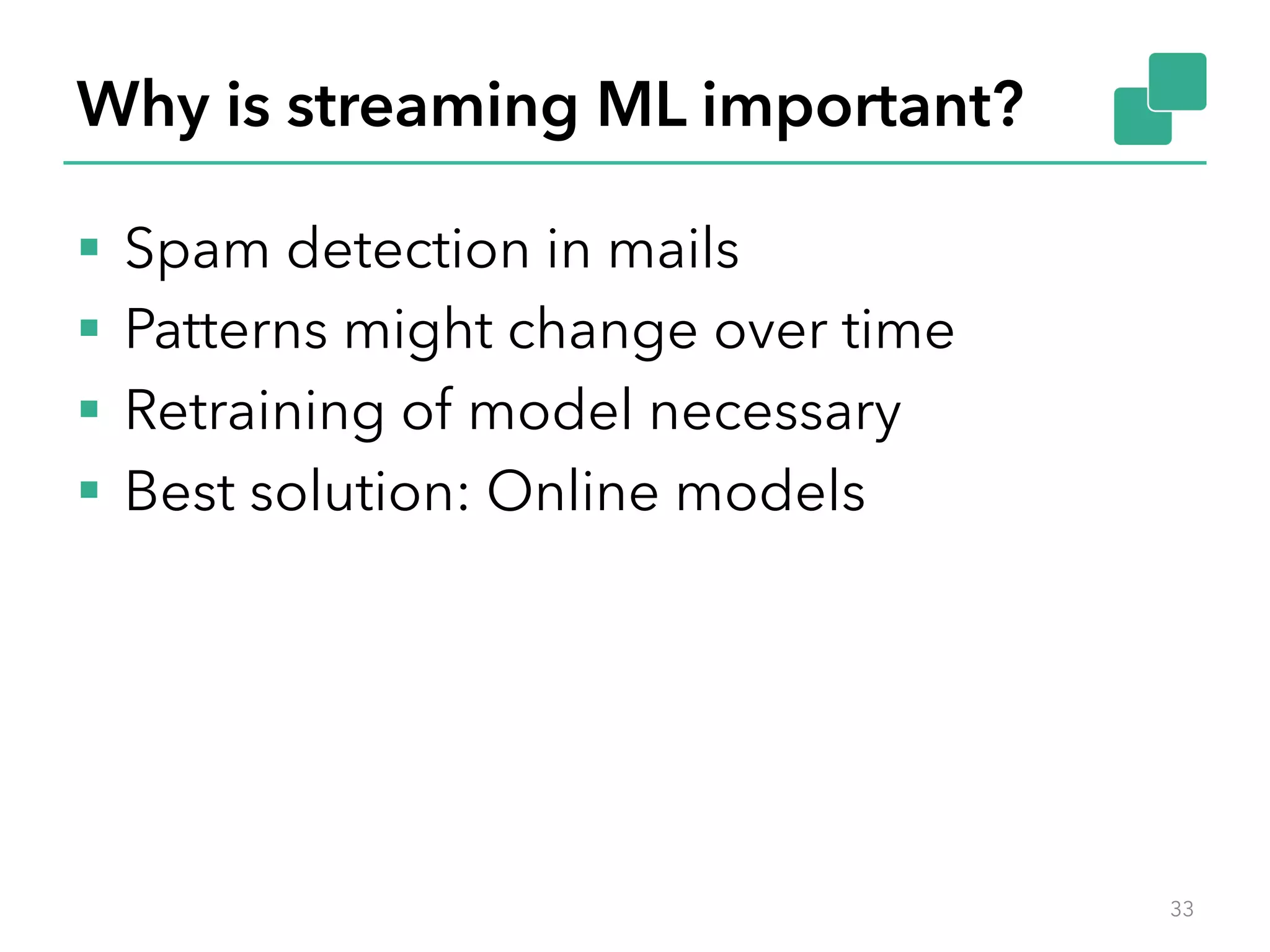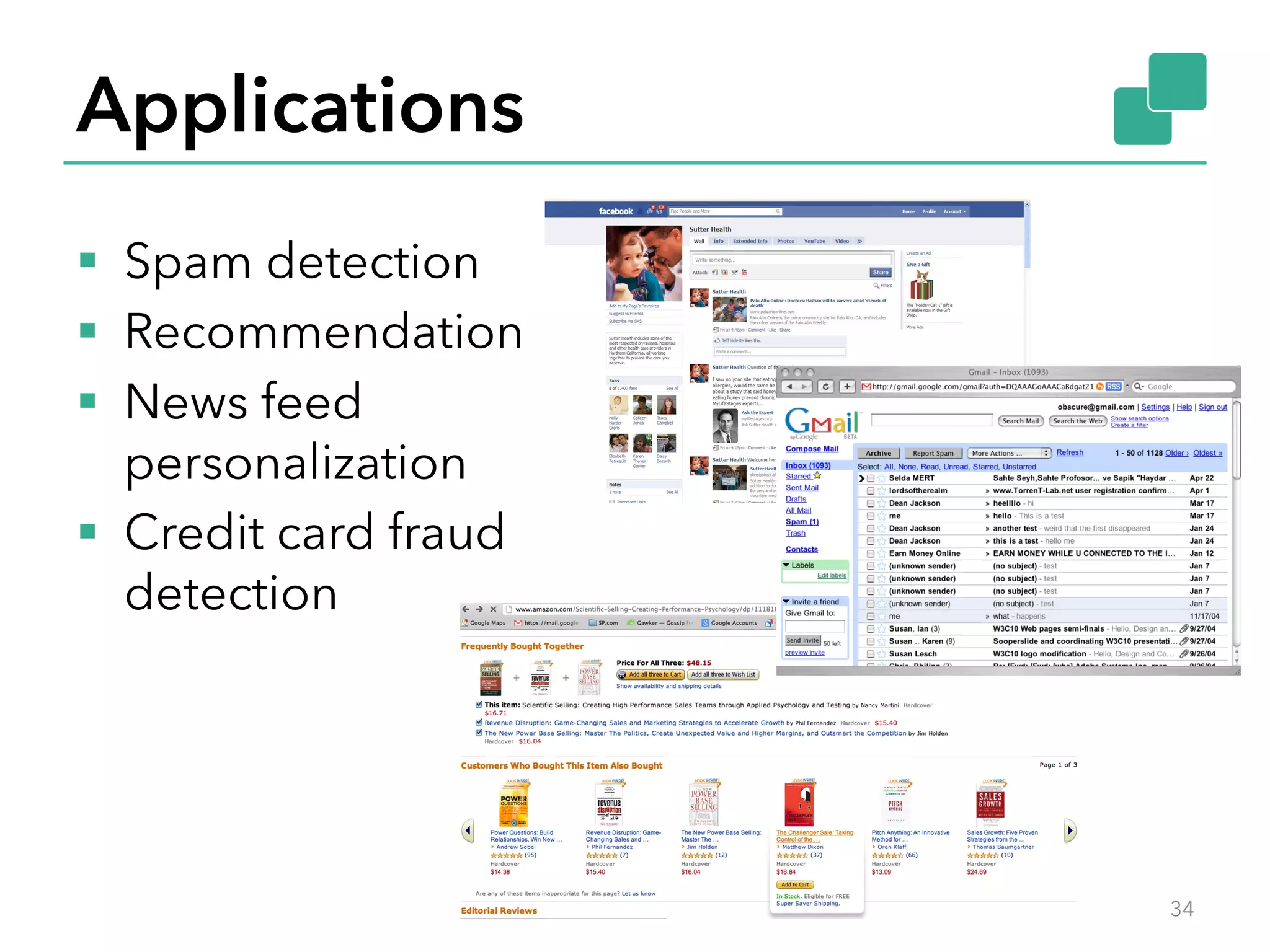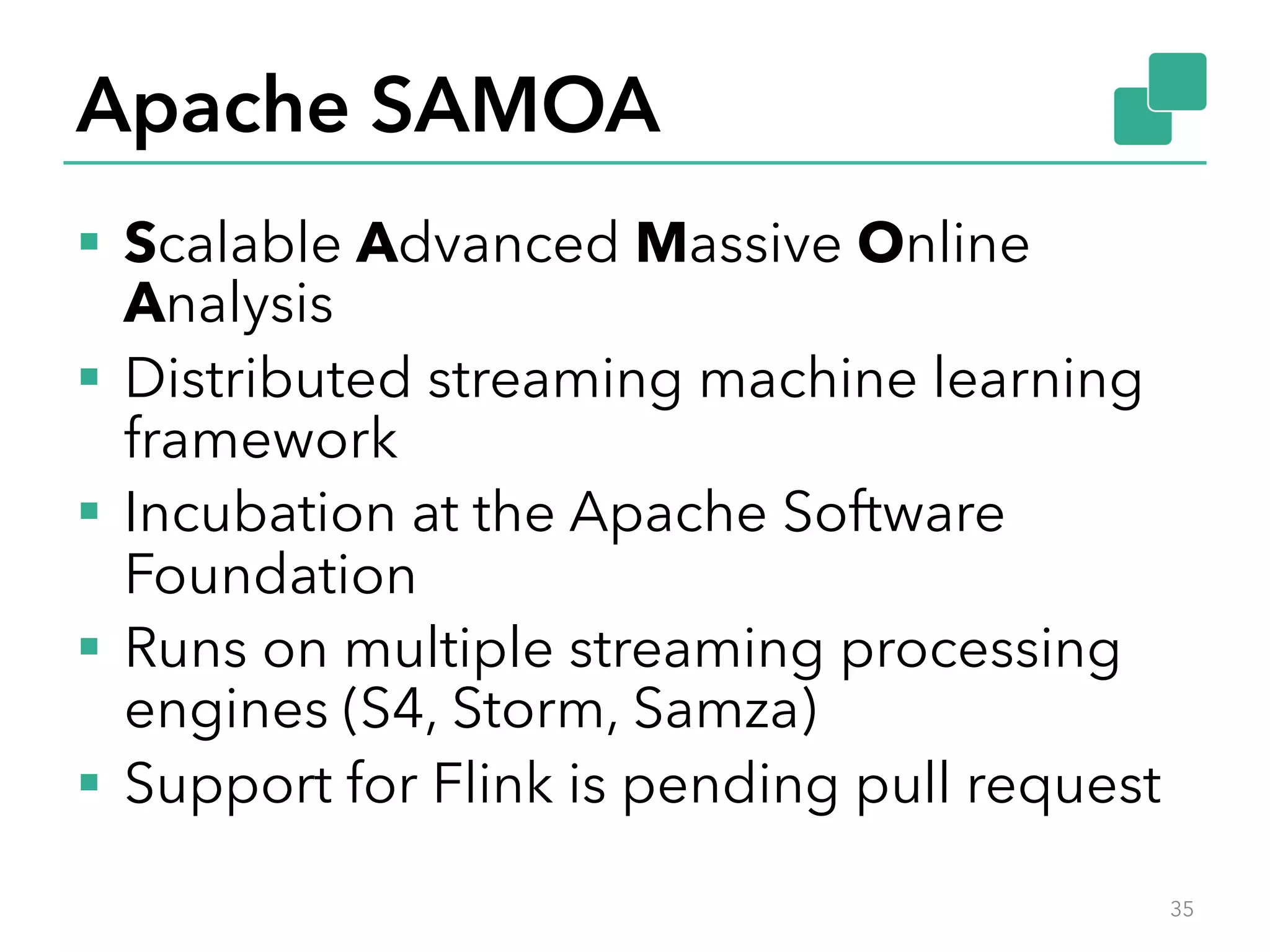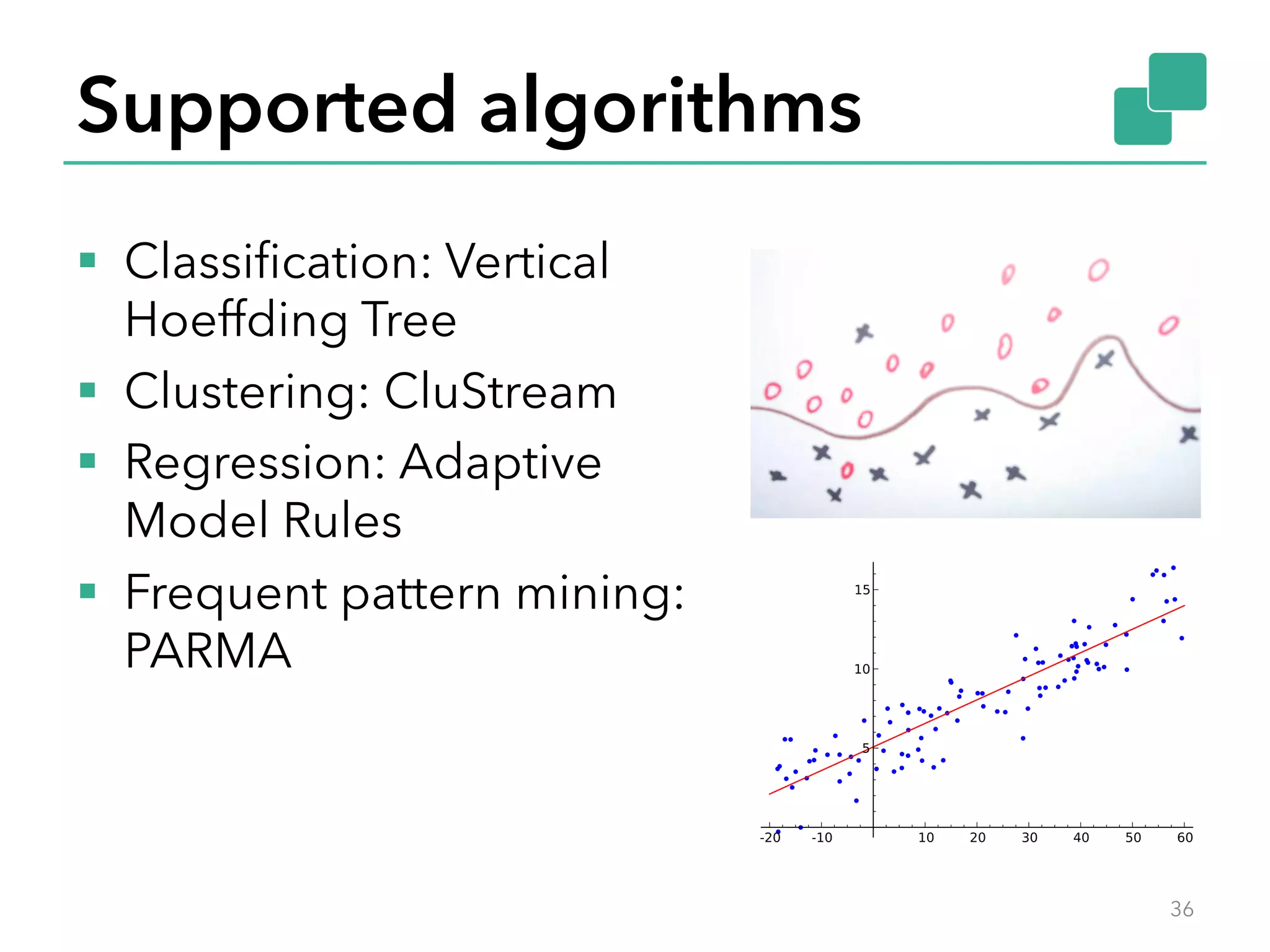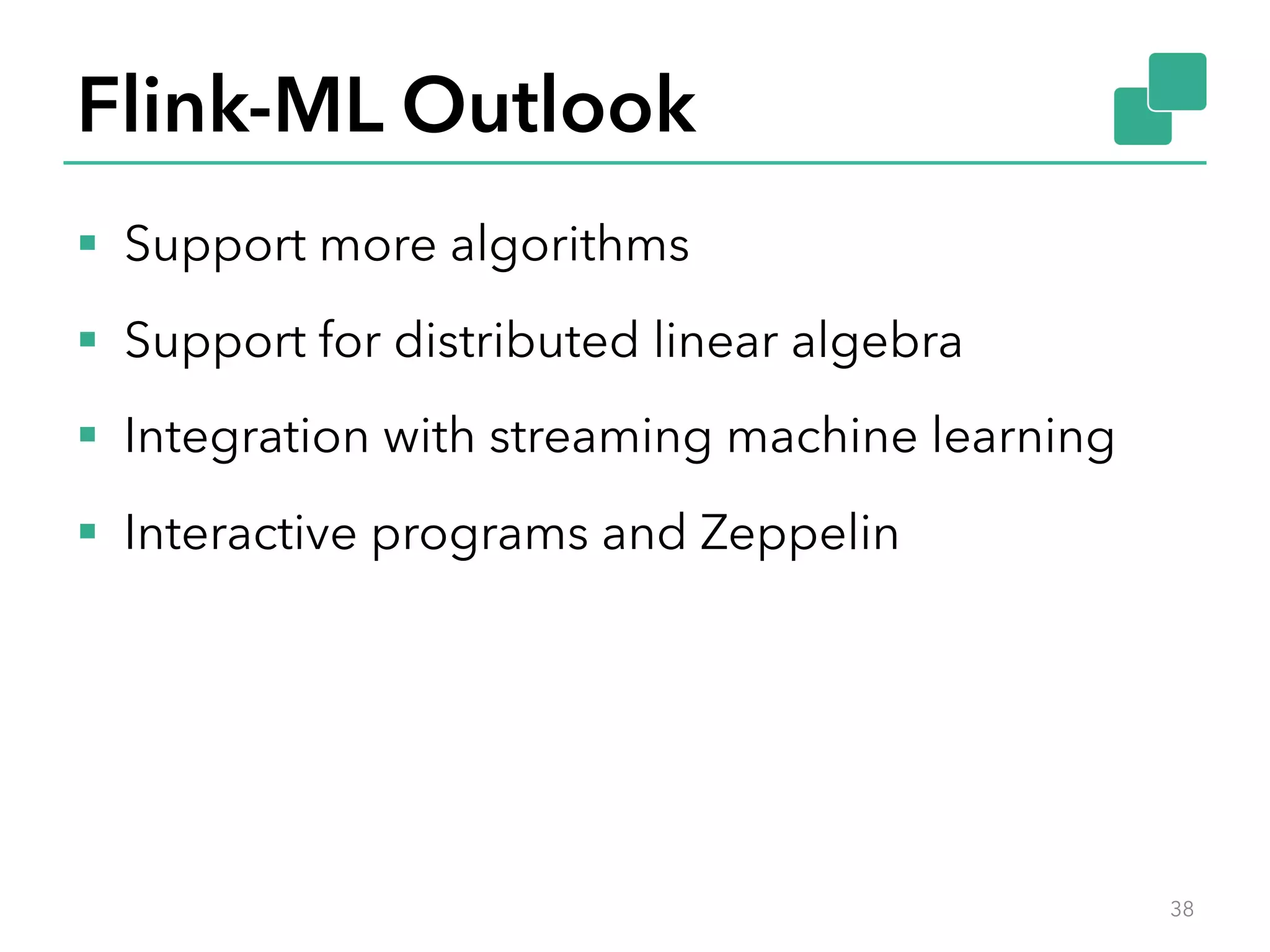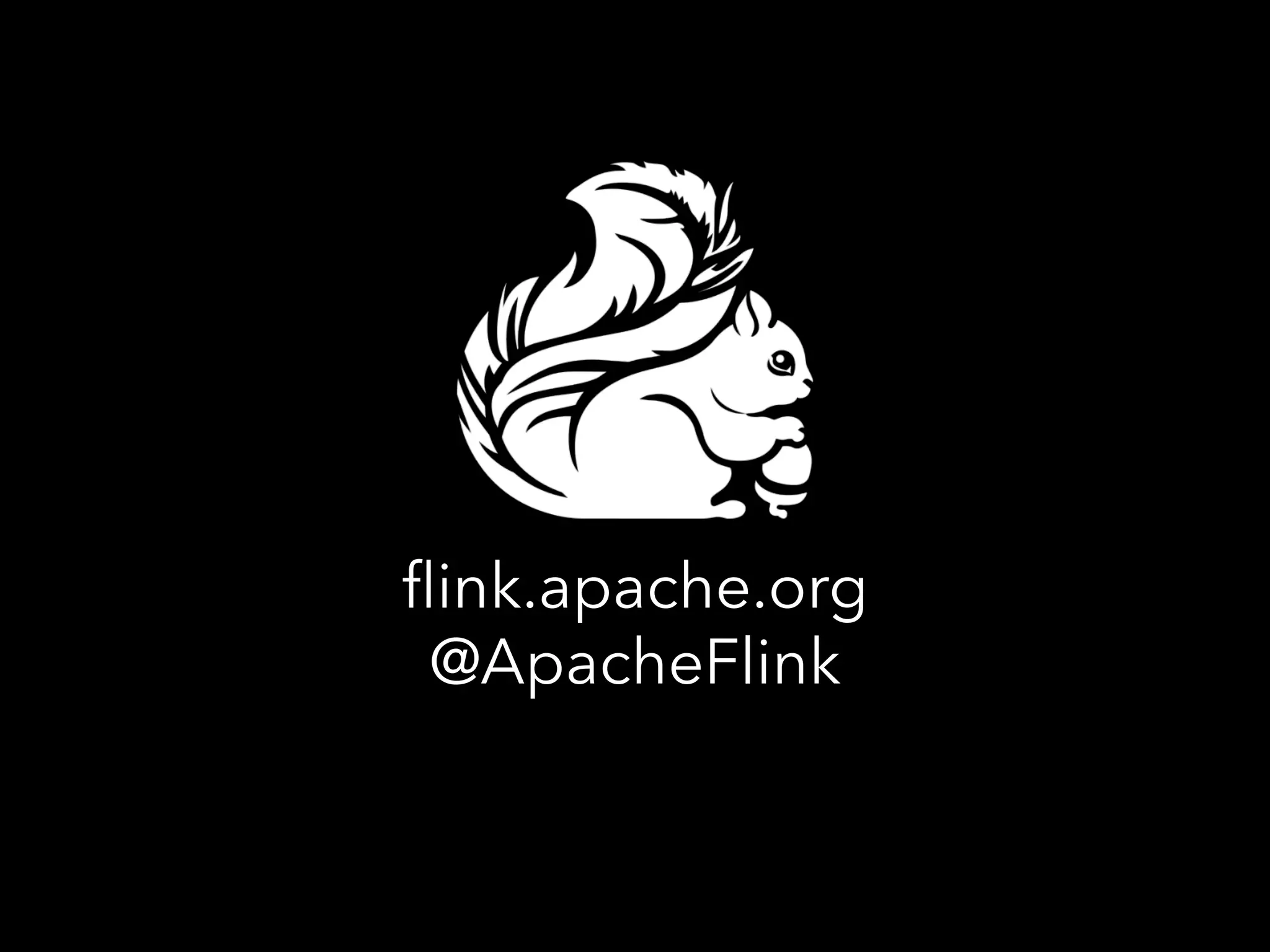The document discusses Apache Flink, a large-scale data processing engine with capabilities for batch and real-time streaming analysis, utilizing a cost-based optimizer and custom memory management. It covers the implementation of machine learning pipelines using Flink, highlighting features like stateful iterations and delta iterations, as well as various algorithms and applications in streaming machine learning. Additionally, it mentions ongoing developments in Flink-ML and its integration with other frameworks for advanced machine learning functionalities.
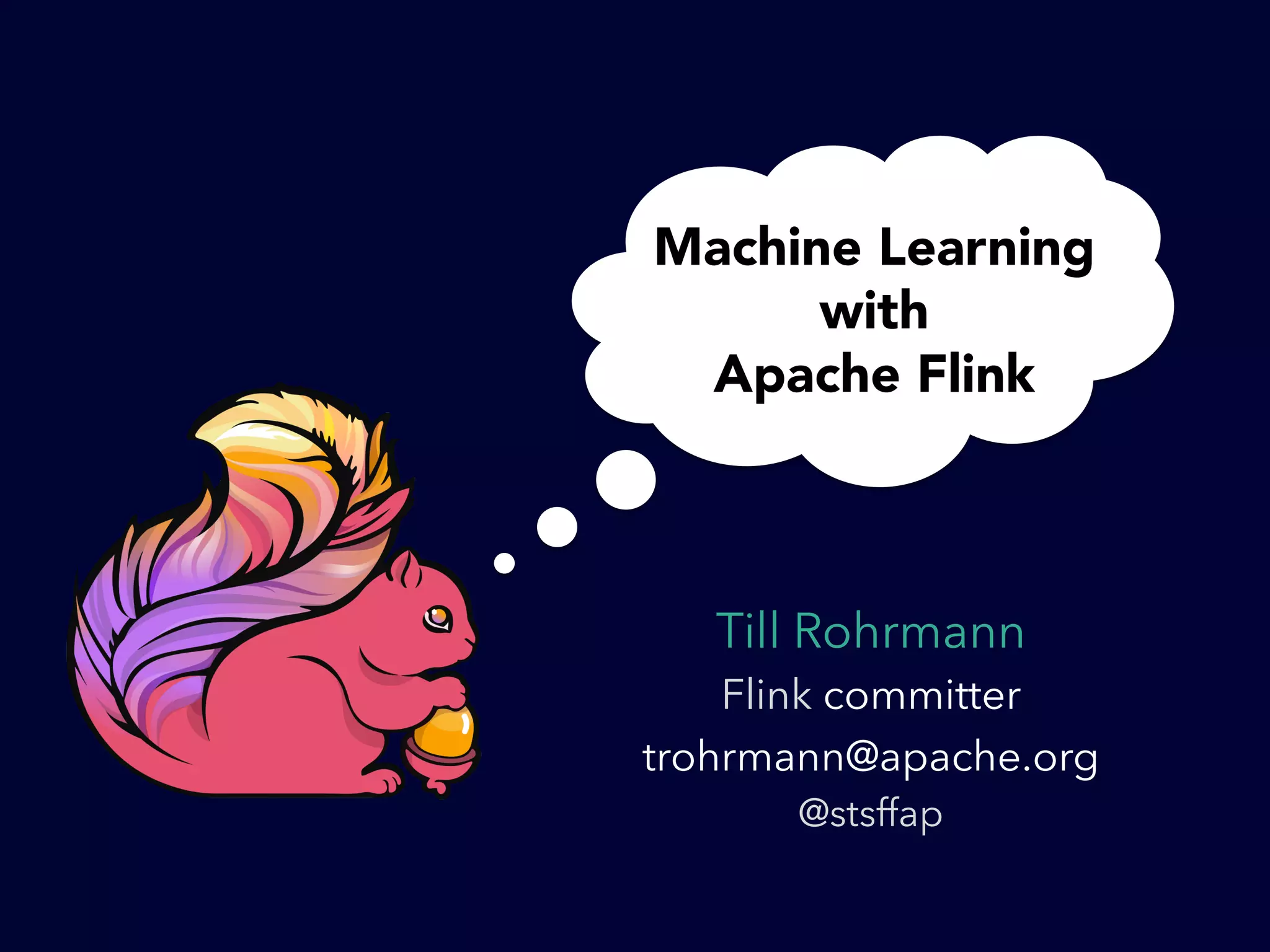
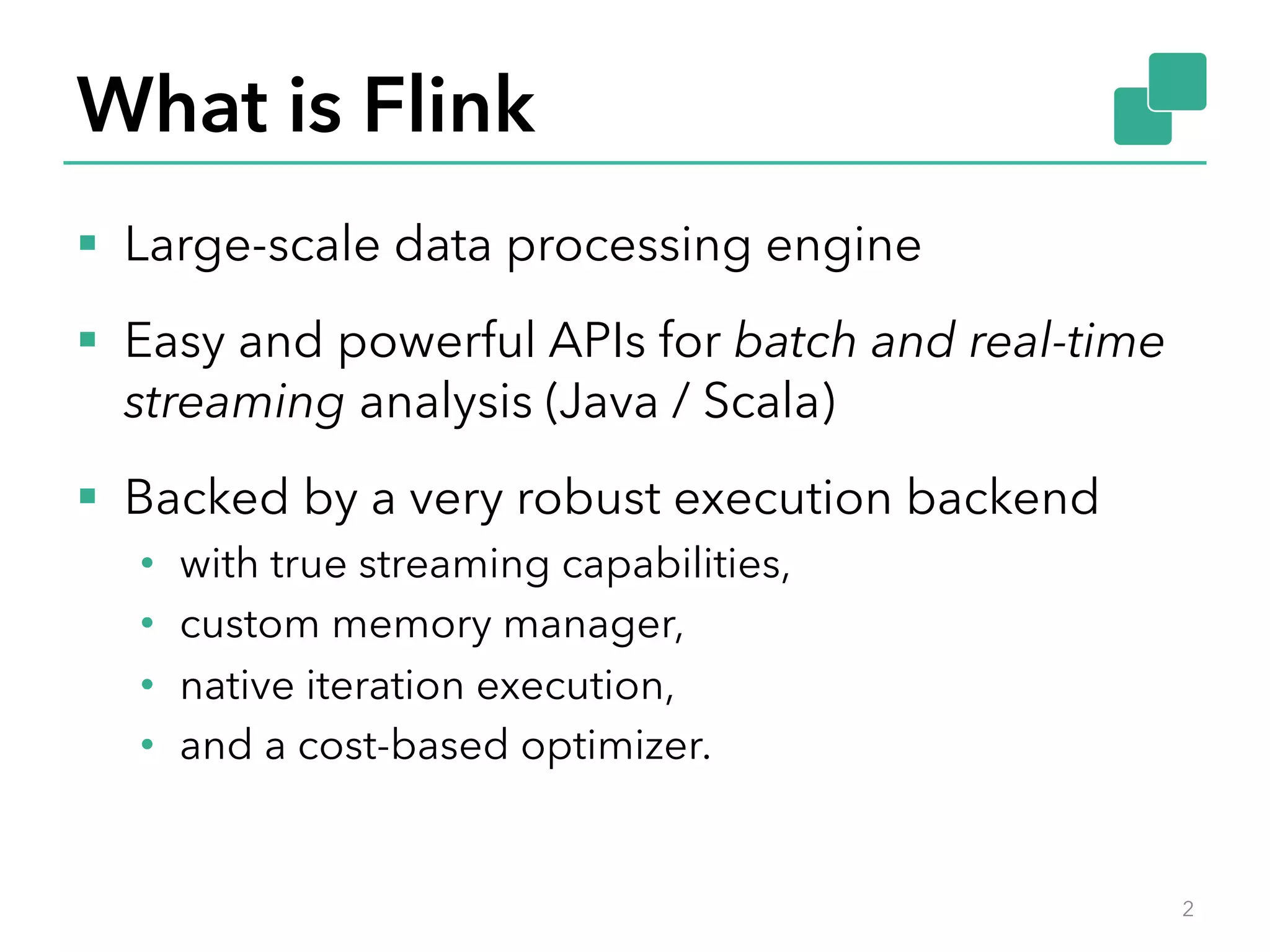
![Technology inside Flink § Technology inspired by compilers + MPP databases + distributed systems § For ease of use, reliable performance, and scalability case class Path (from: Long, to: Long) val tc = edges.iterate(10) { paths: DataSet[Path] => val next = paths .join(edges) .where("to") .equalTo("from") { (path, edge) => Path(path.from, edge.to) } .union(paths) .distinct() next } Cost-based optimizer Type extraction stack Memory manager Out-of-core algos real-time streaming Task scheduling Recovery metadata Data serialization stack Streaming network stack ... Pre-flight (client) Master Workers](https://image.slidesharecdn.com/flinkstockholm-150324090049-conversion-gate01/75/Machine-Learning-with-Apache-Flink-at-Stockholm-Machine-Learning-Group-3-2048.jpg)
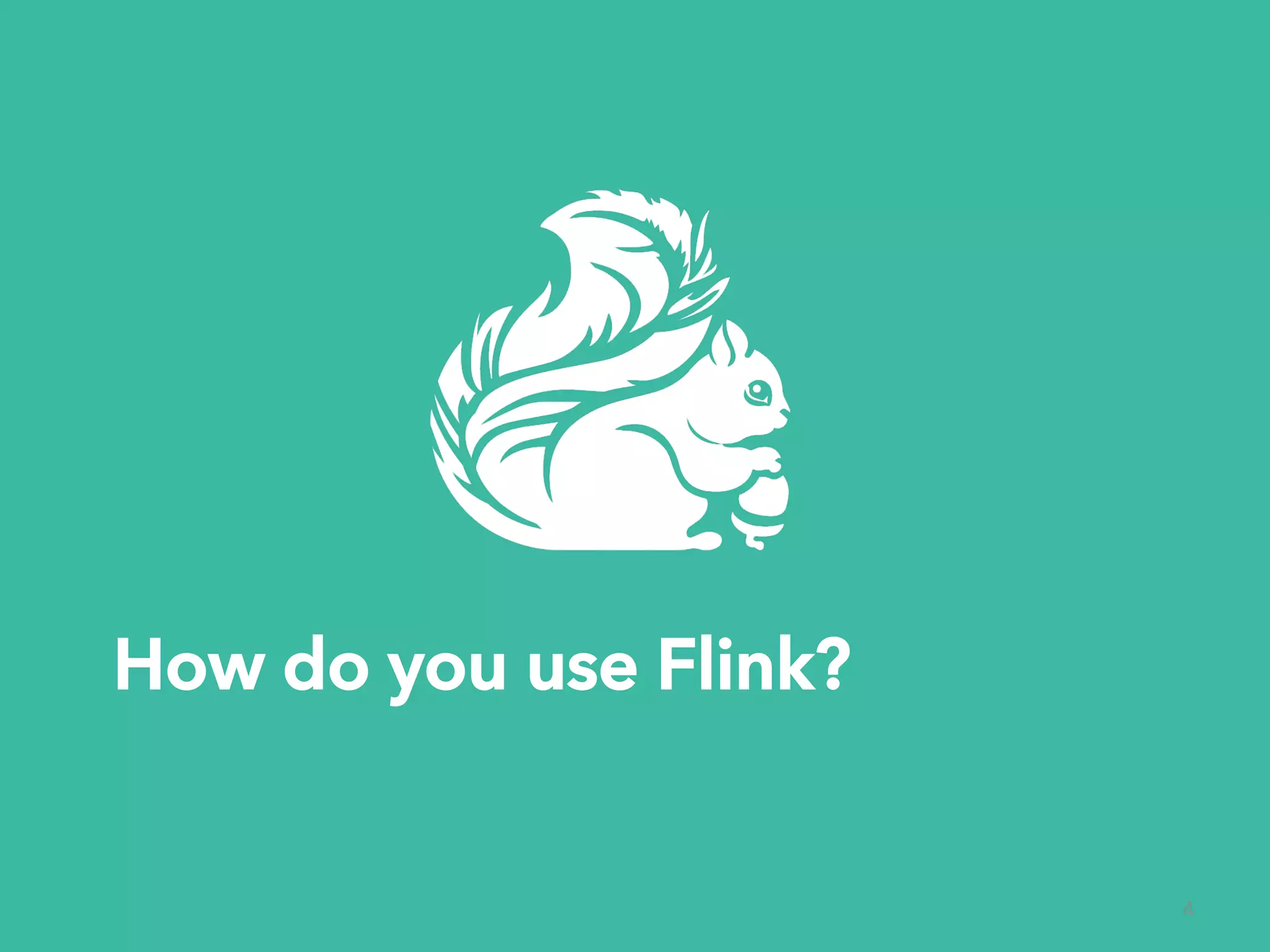
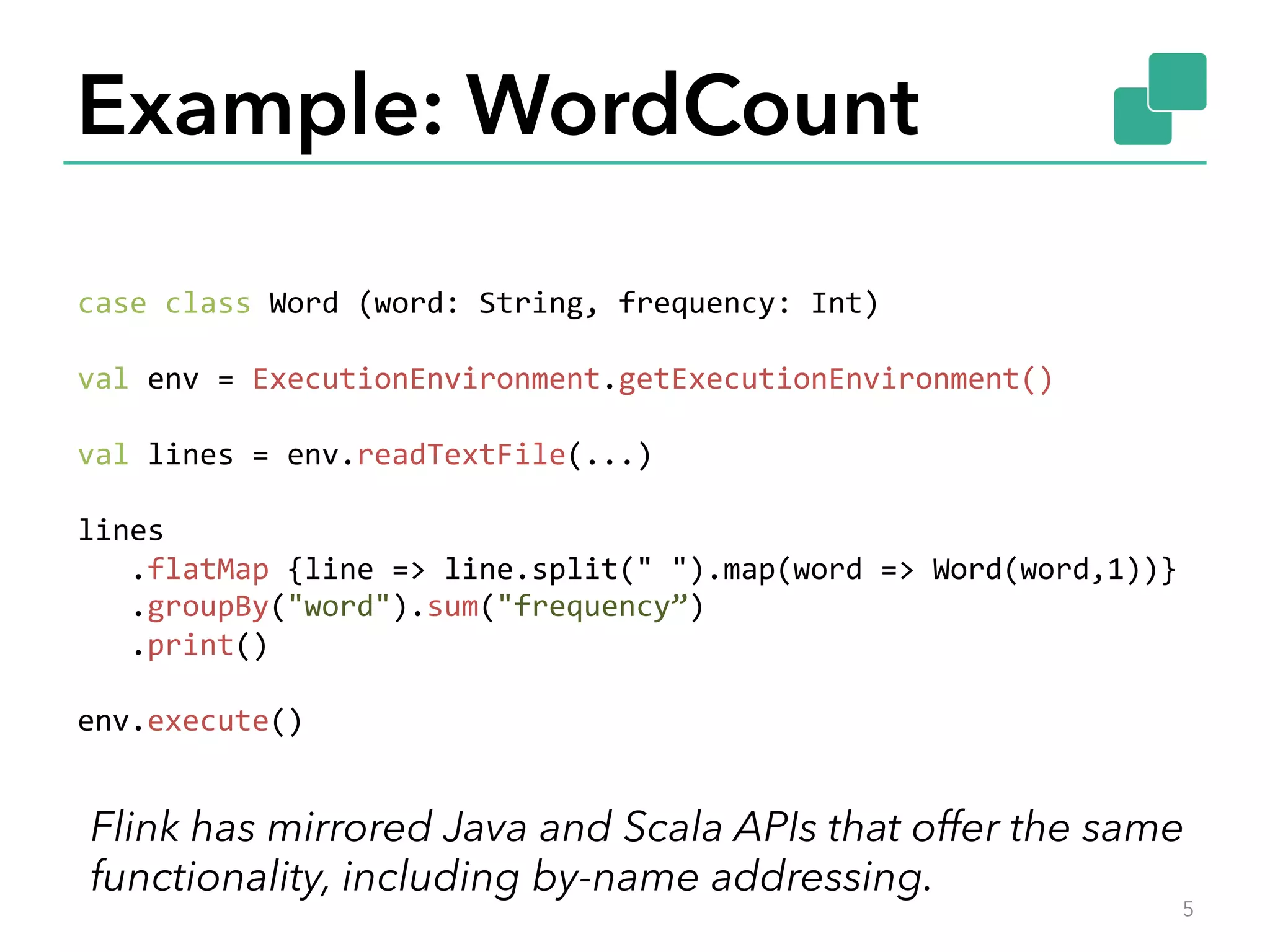
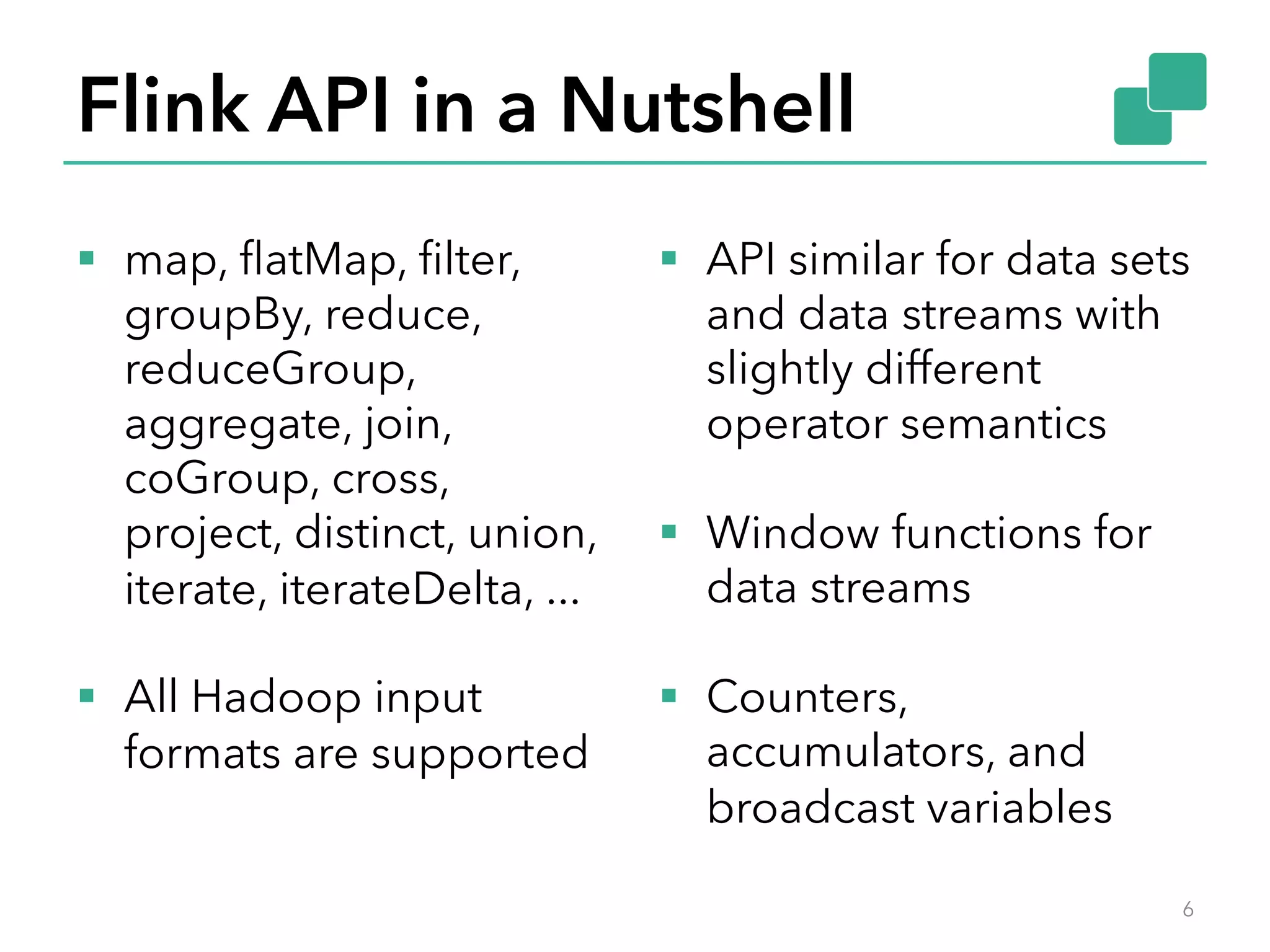
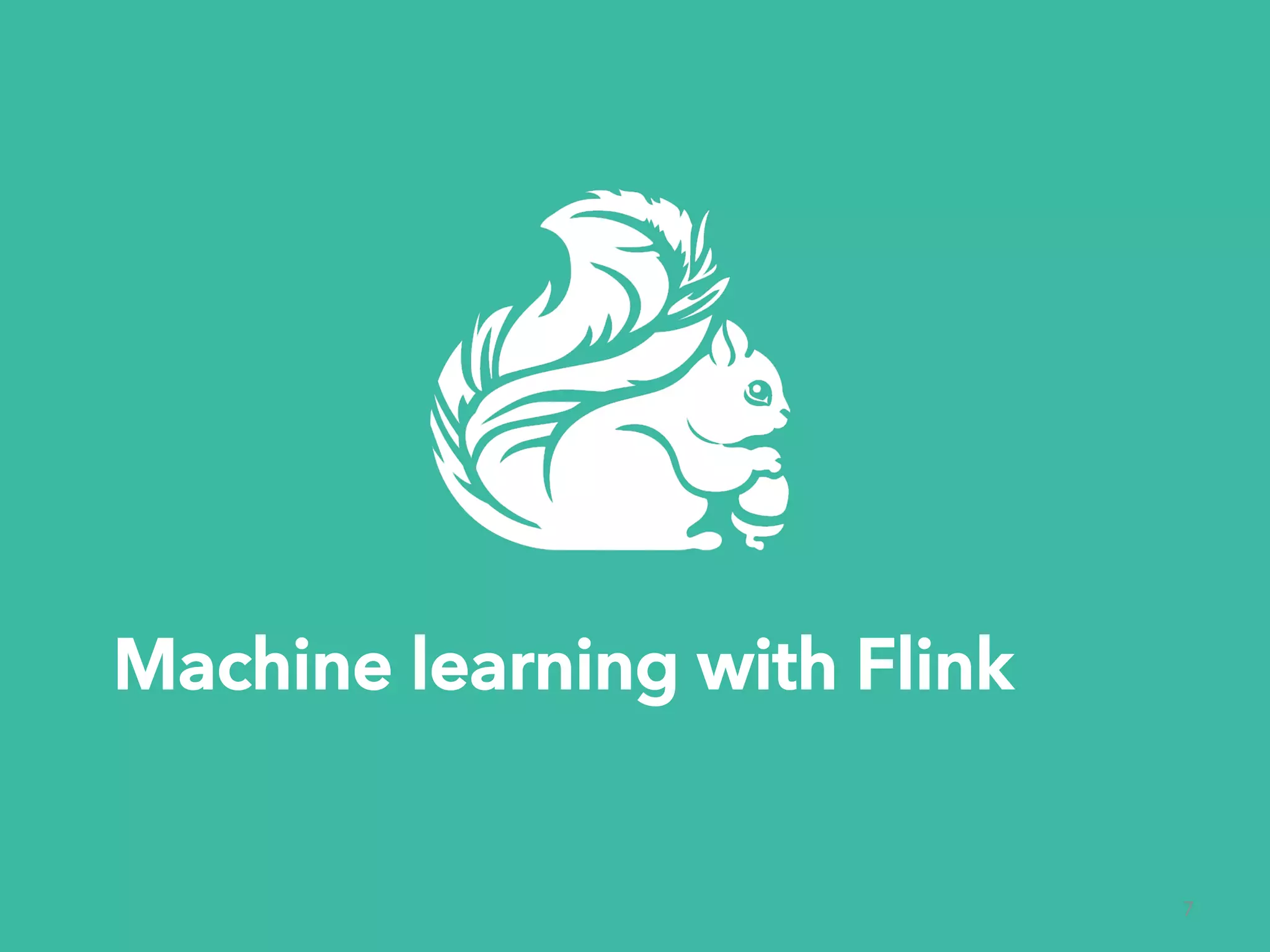
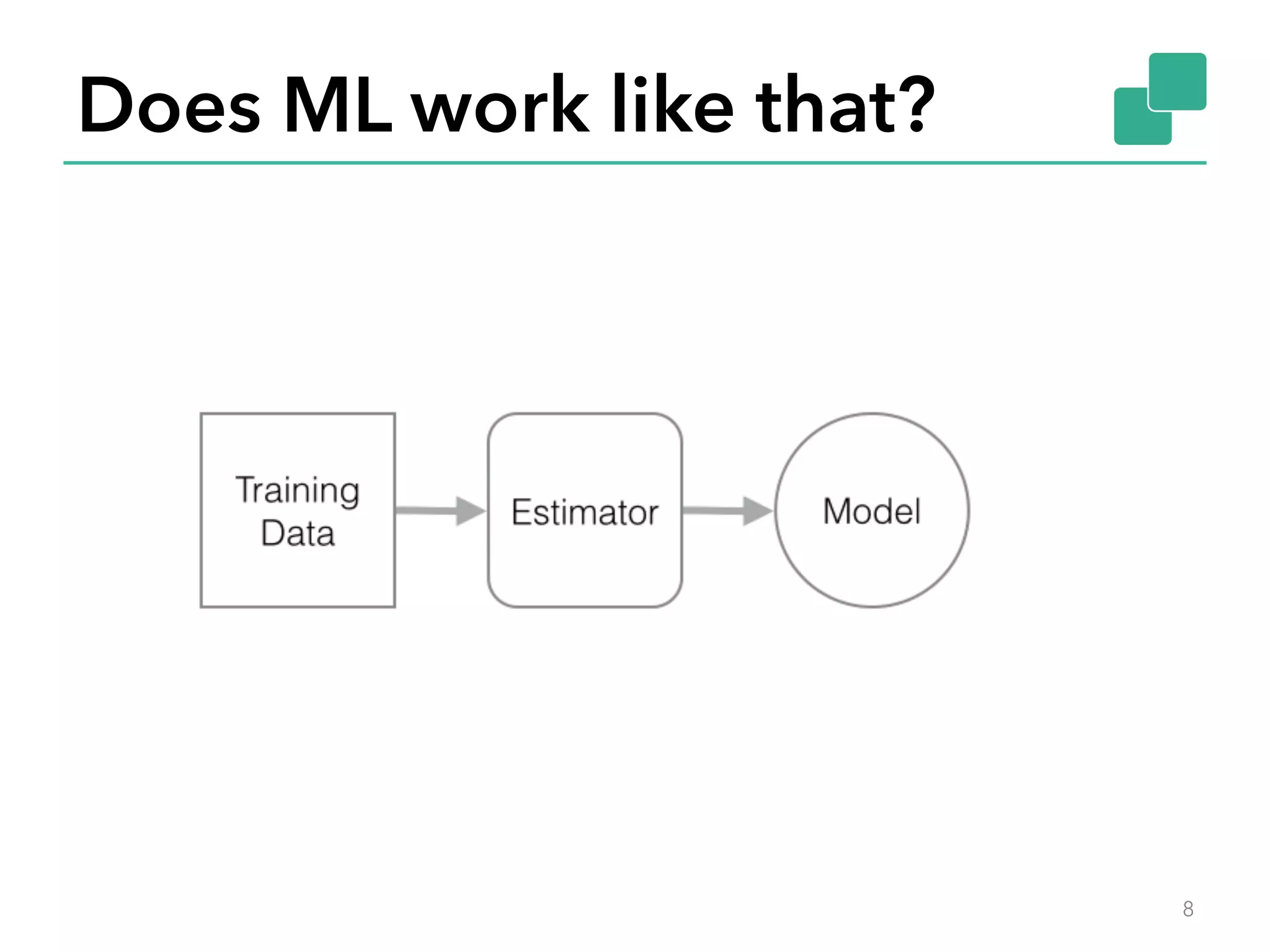
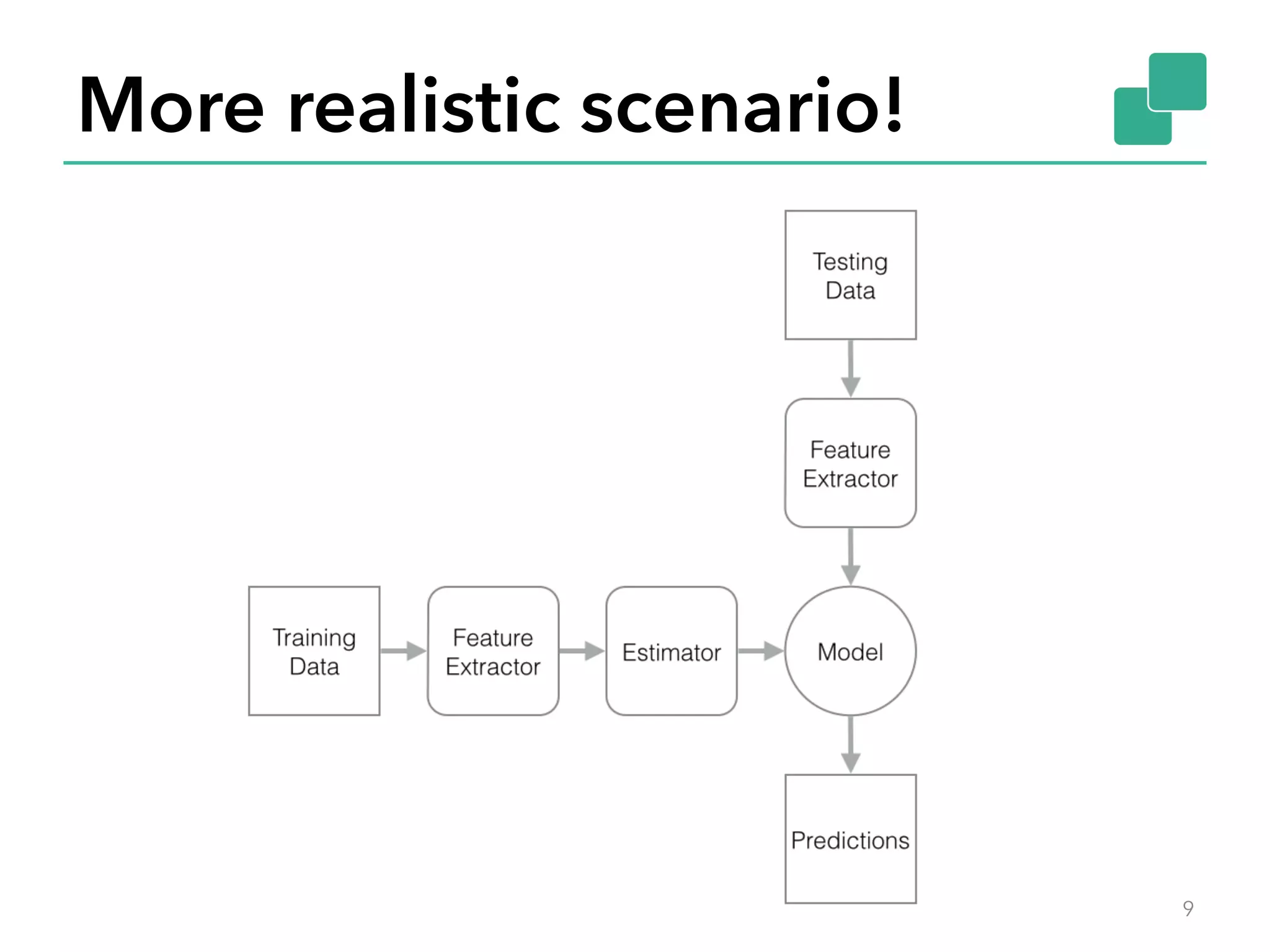
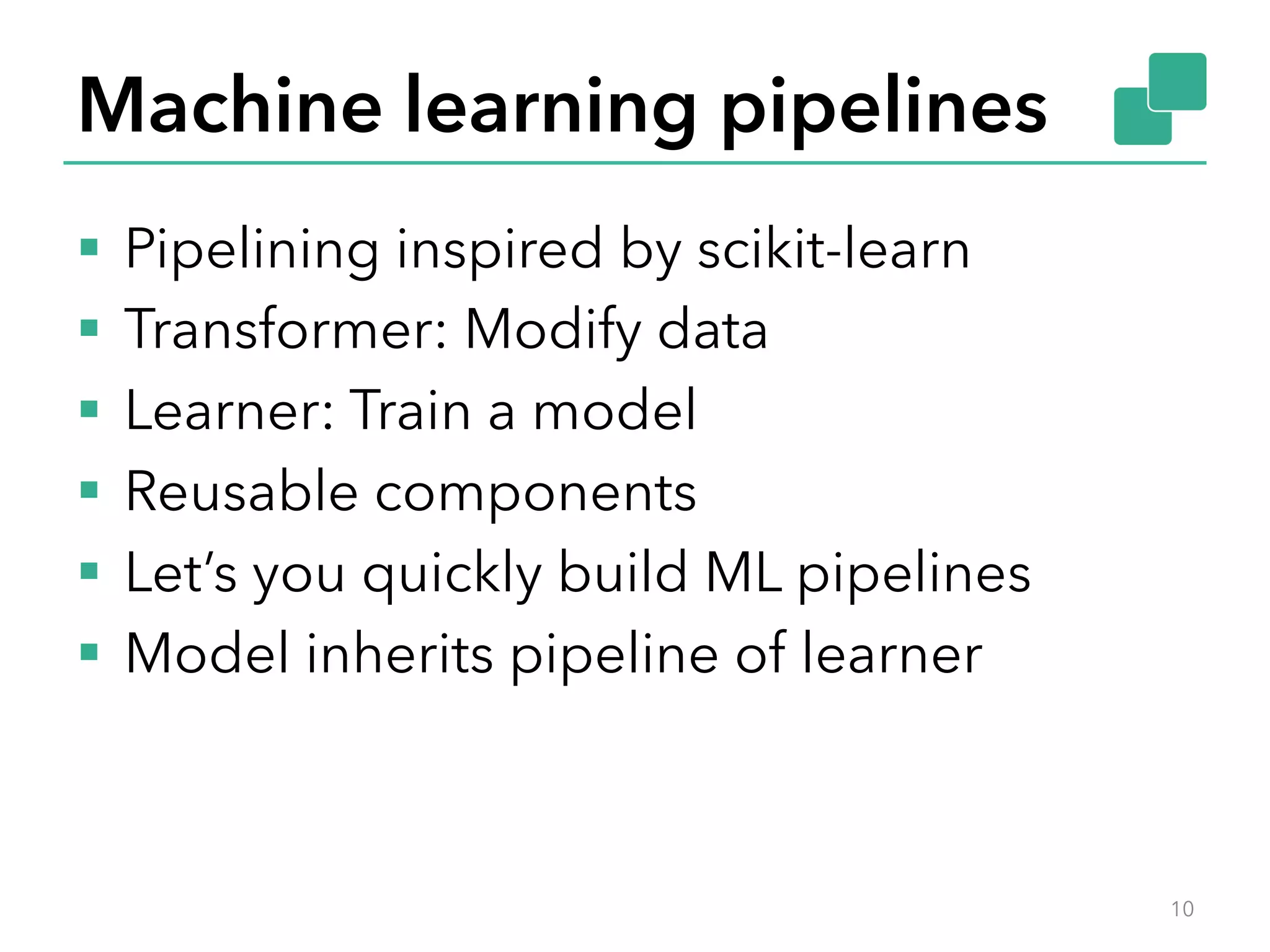
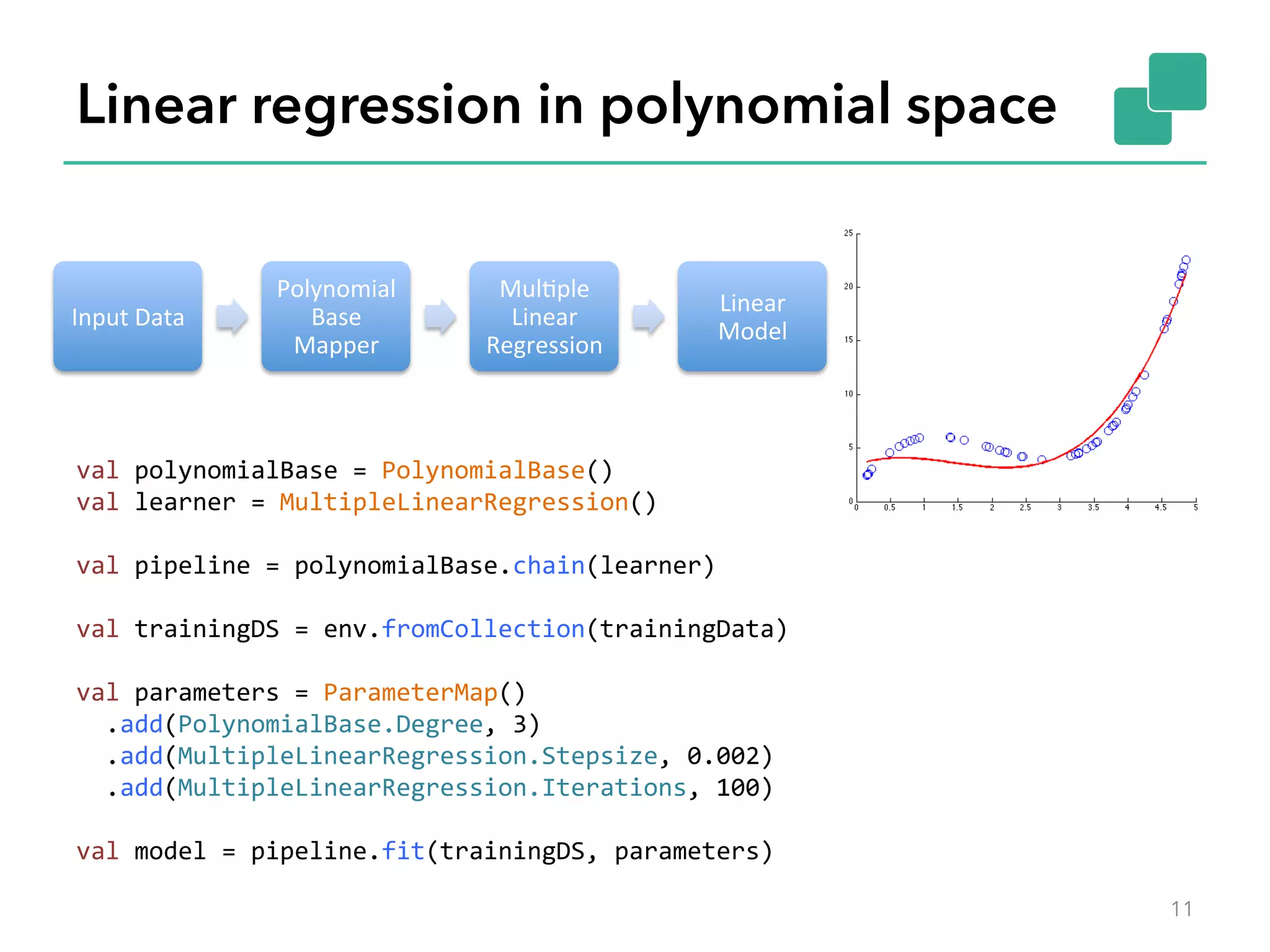
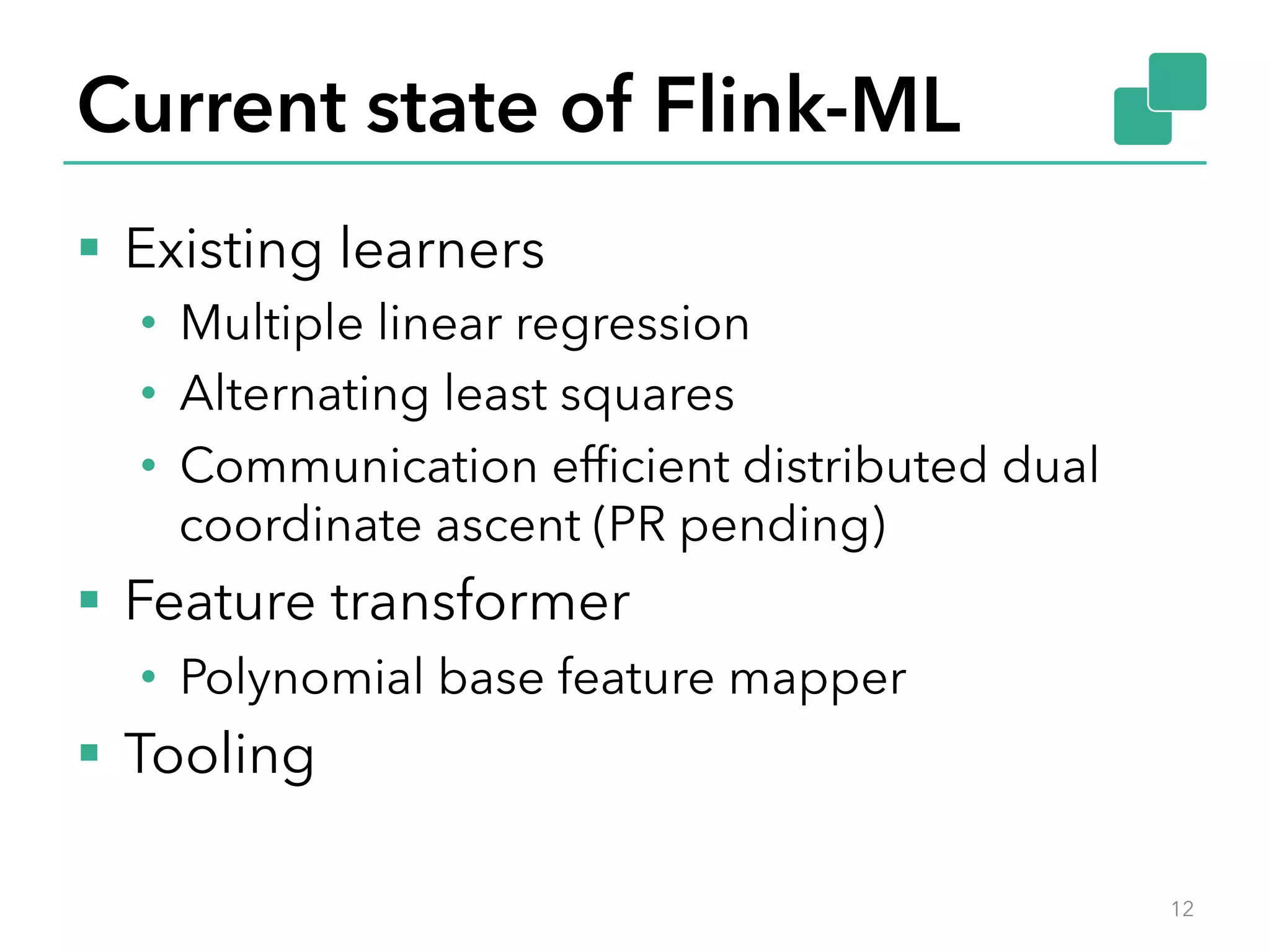
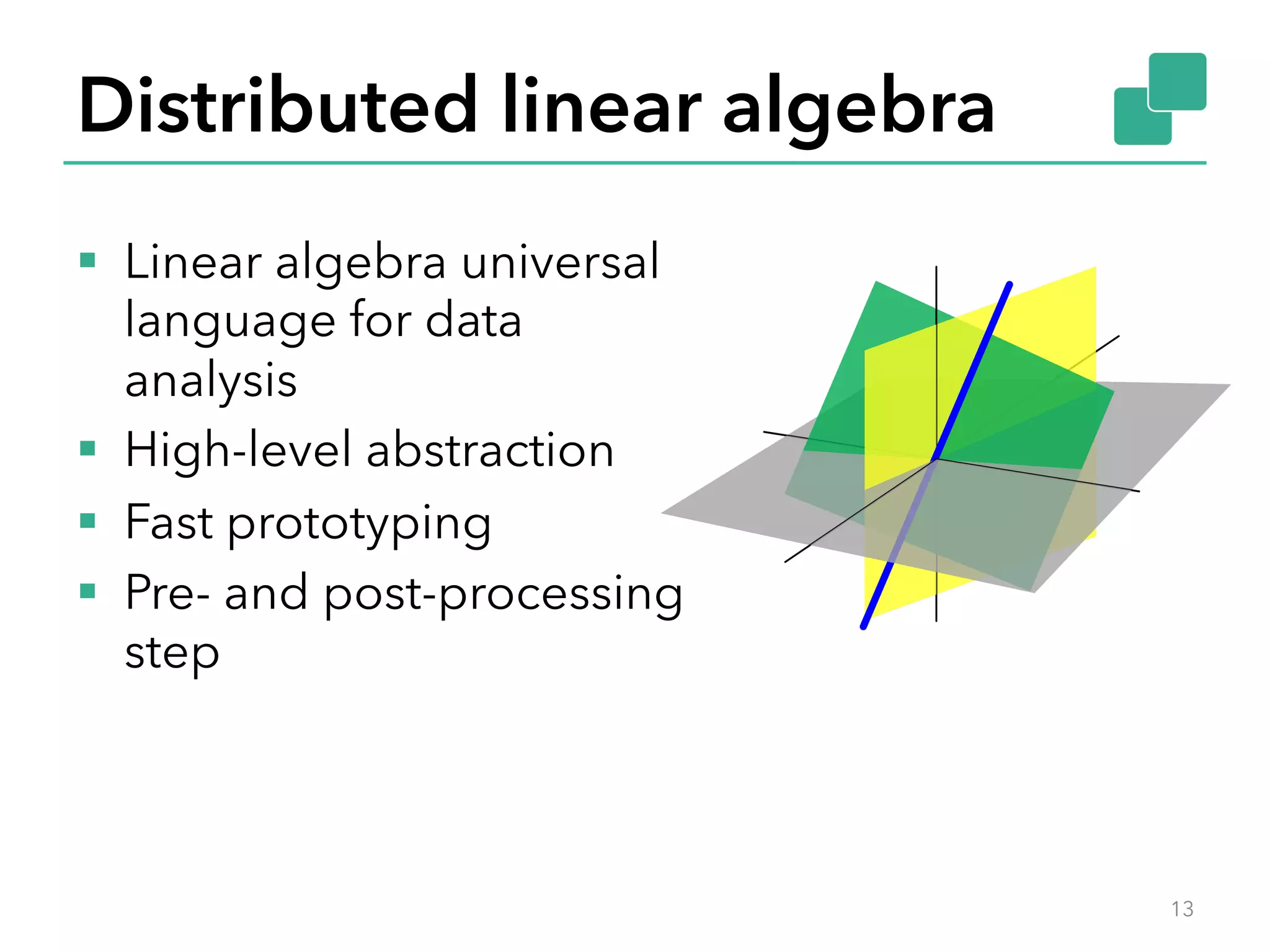
![Example: Gaussian non-negative matrix factorization § Given input matrix V, find W and H such that § Iterative approximation 14 Ht+1 = Ht ∗ Wt T V /Wt T Wt Ht( ) Wt+1 = Wt ∗ VHt+1 T /Wt Ht+1Ht+1 T ( ) V ≈ WH var i = 0 var H: CheckpointedDrm[Int] = randomMatrix(k, V.numCols) var W: CheckpointedDrm[Int] = randomMatrix(V.numRows, k) while(i < maxIterations) { H = H * (W.t %*% V / W.t %*% W %*% H) W = W * (V %*% H.t / W %*% H %*% H.t) i += 1 }](https://image.slidesharecdn.com/flinkstockholm-150324090049-conversion-gate01/75/Machine-Learning-with-Apache-Flink-at-Stockholm-Machine-Learning-Group-14-2048.jpg)
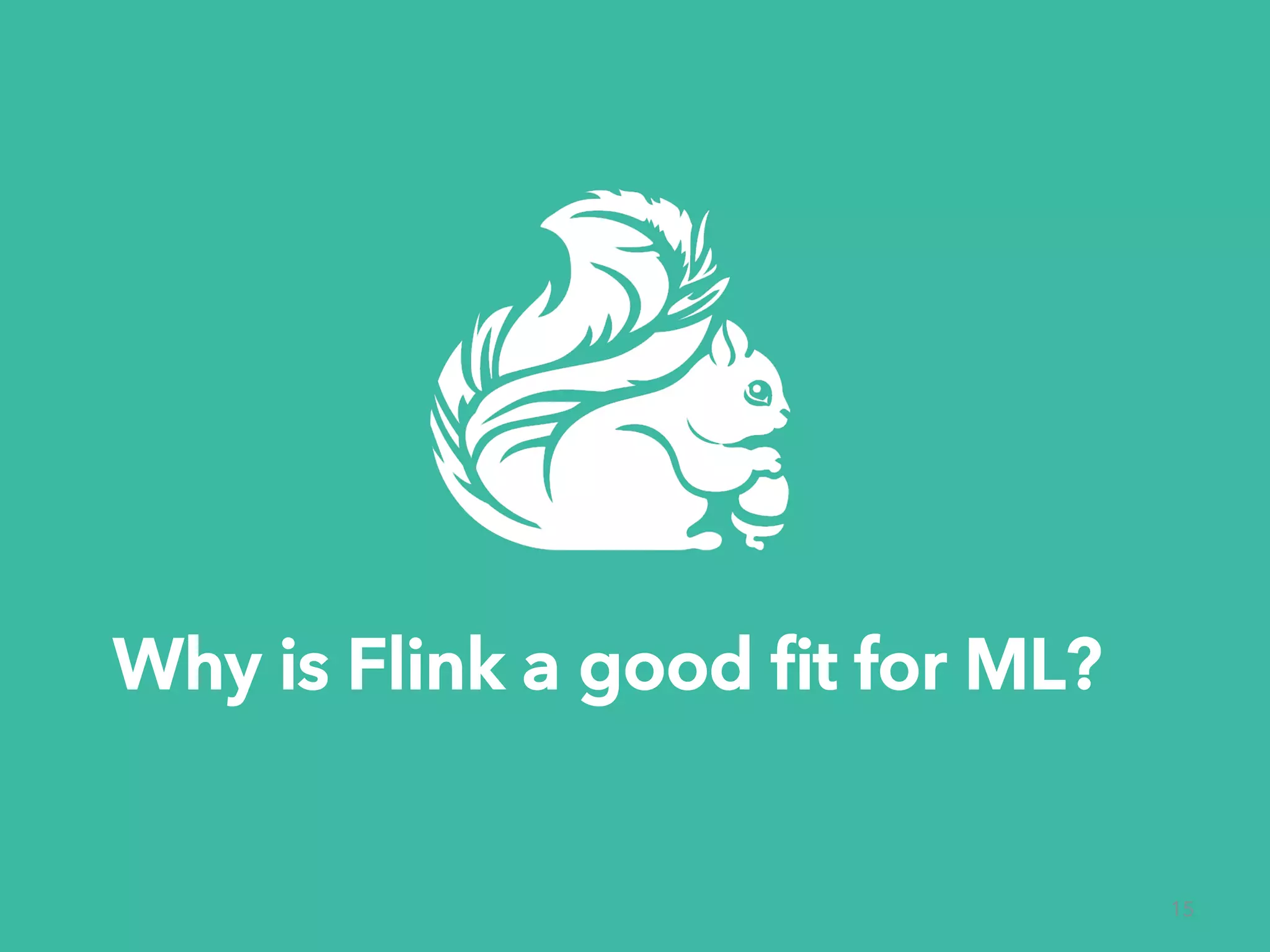
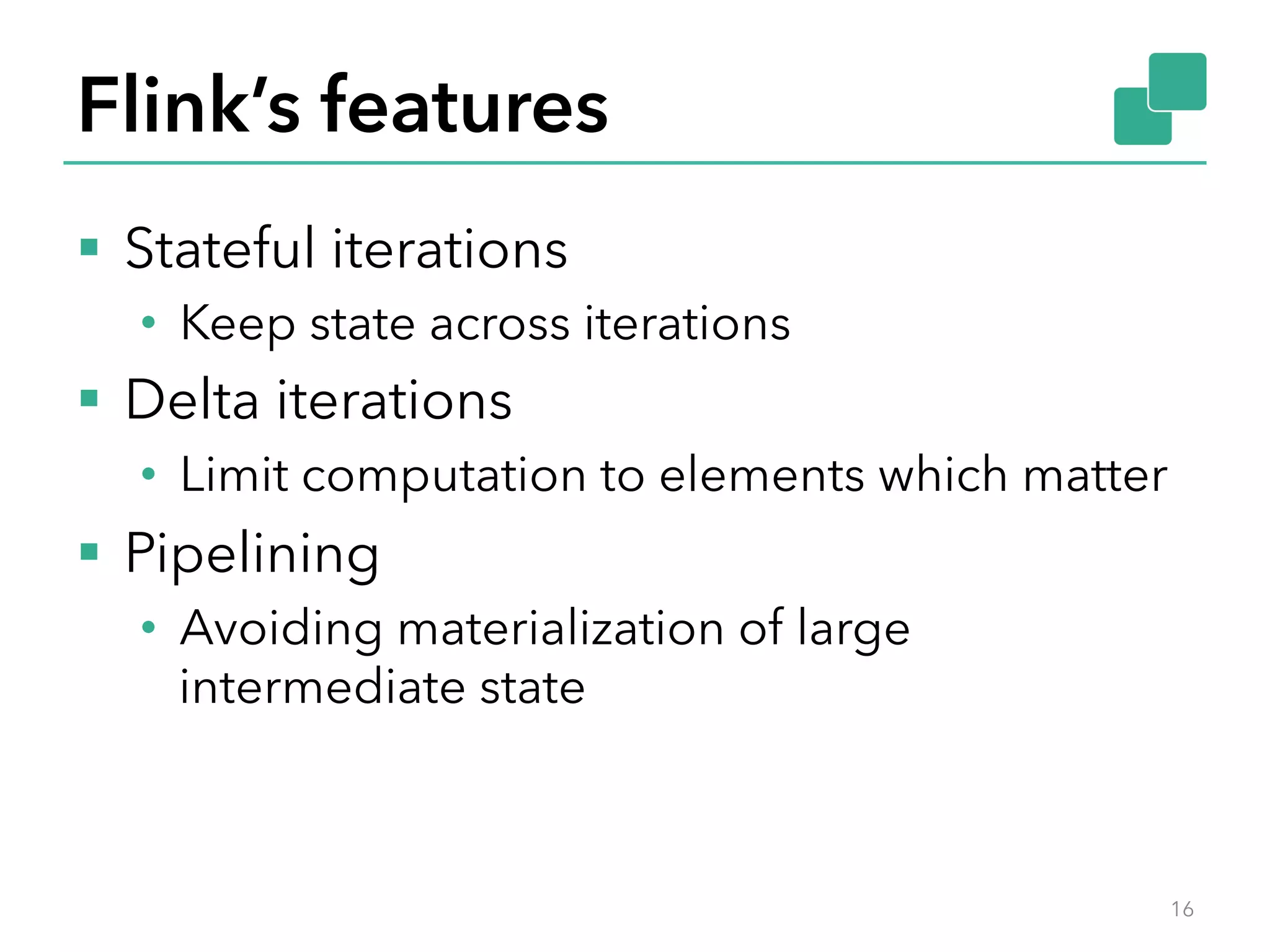
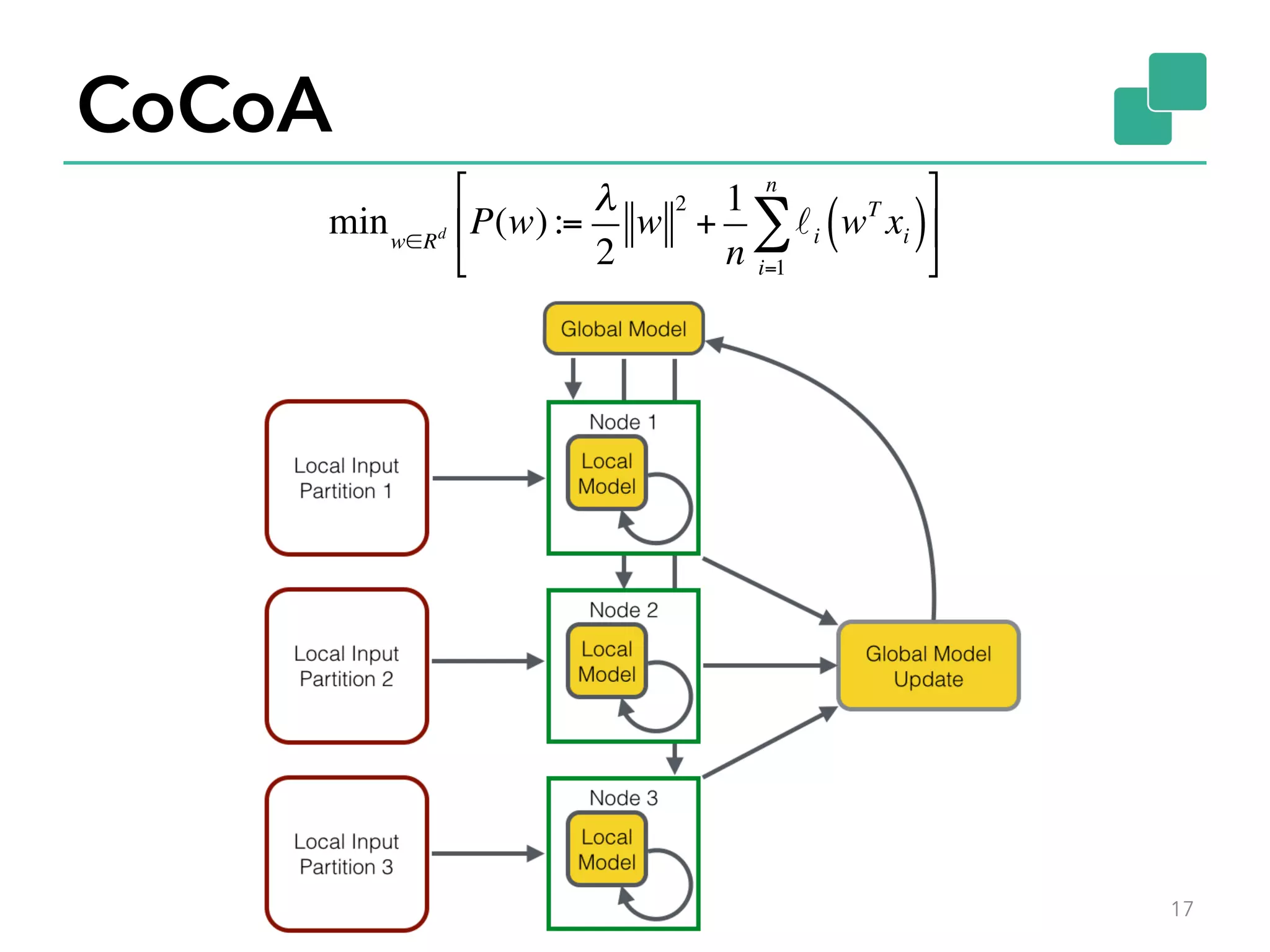
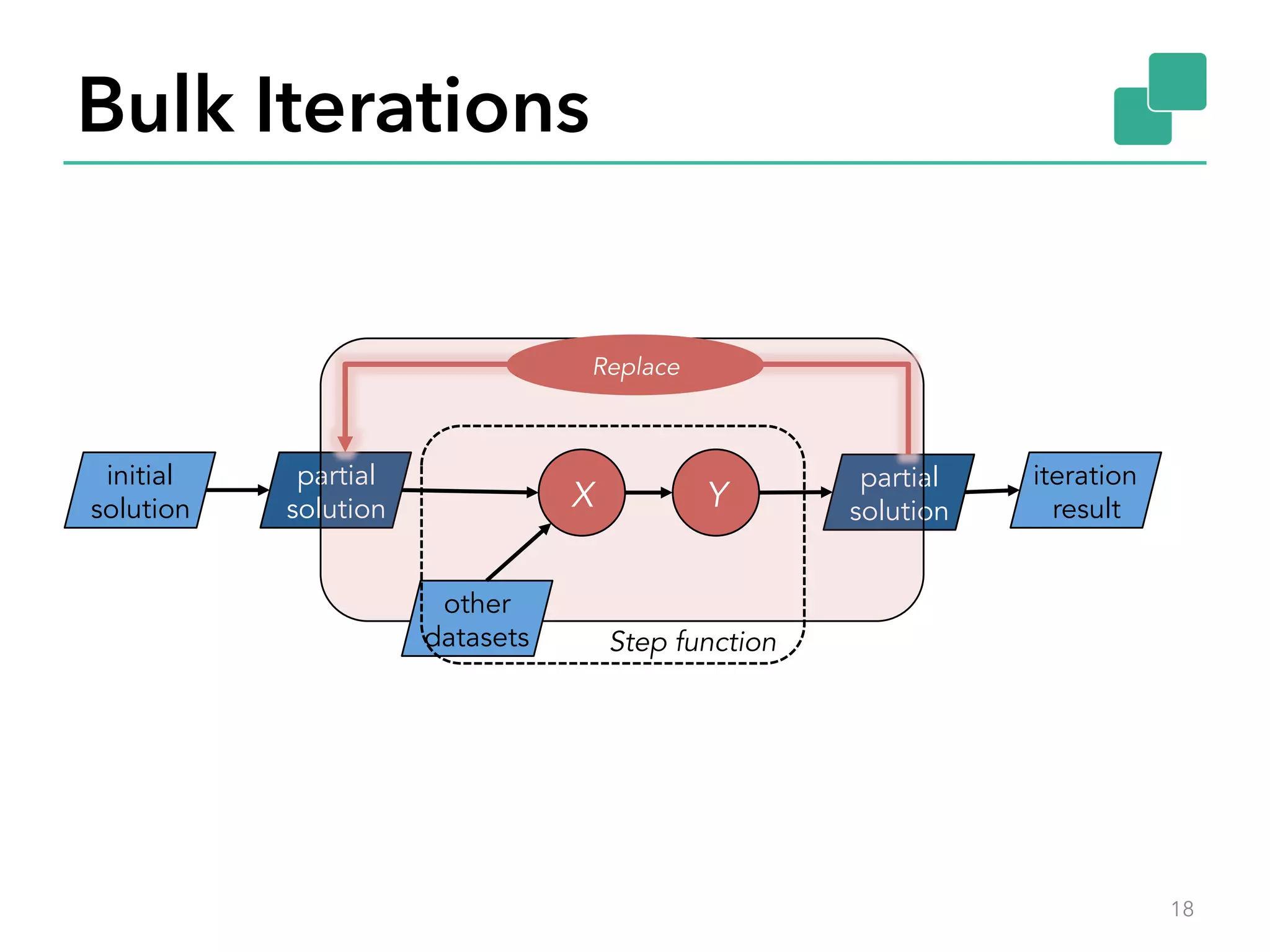
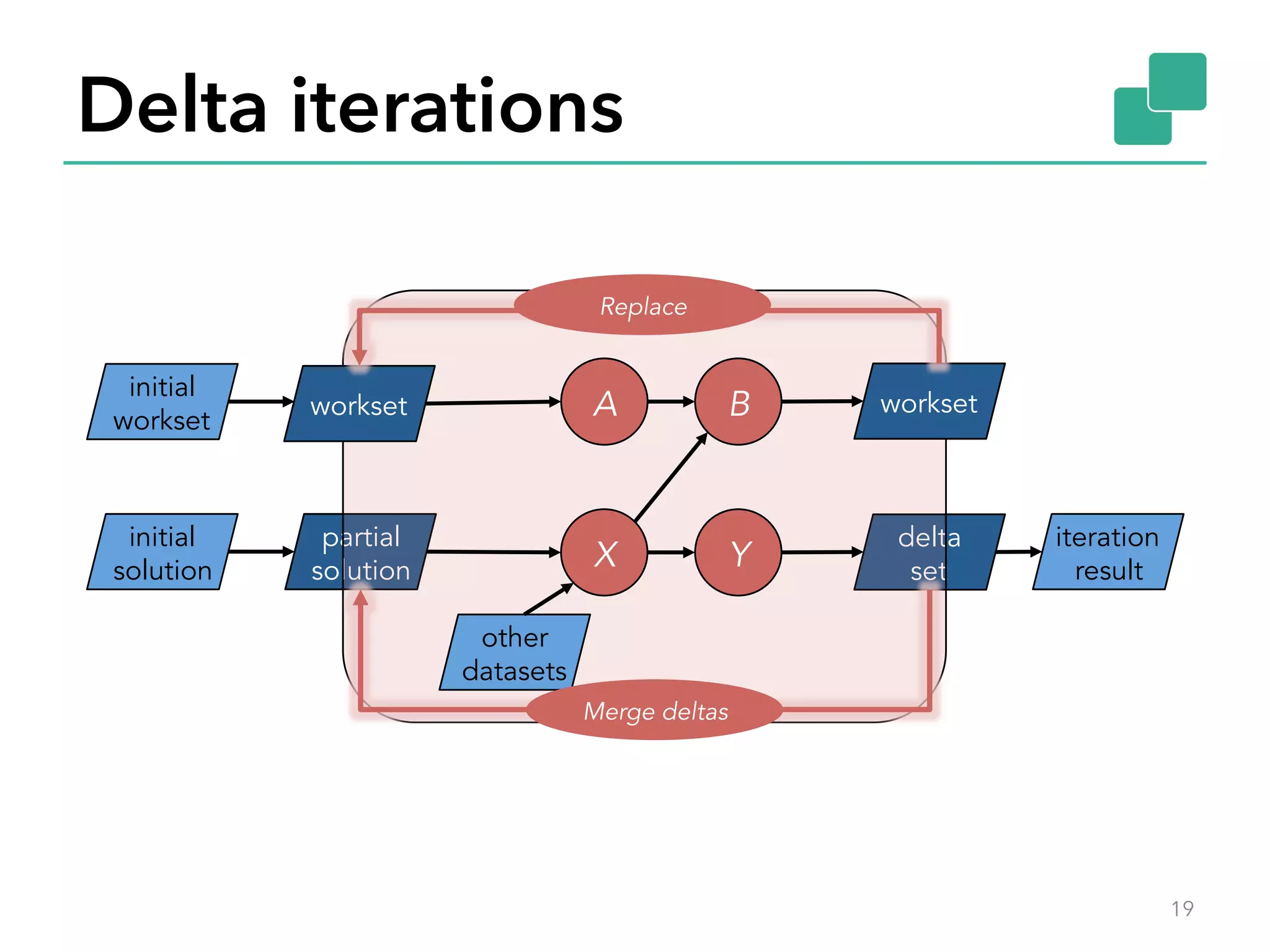
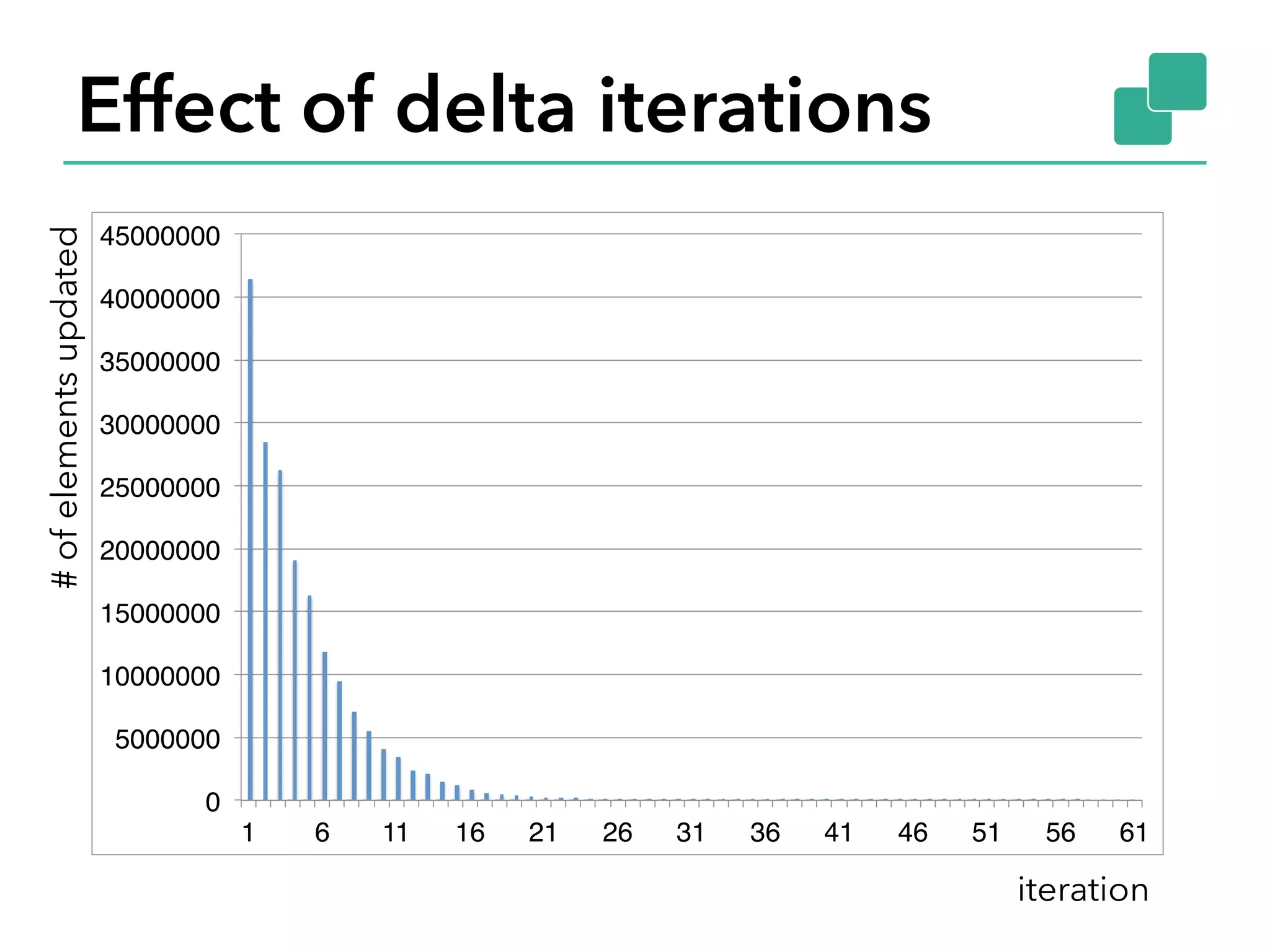
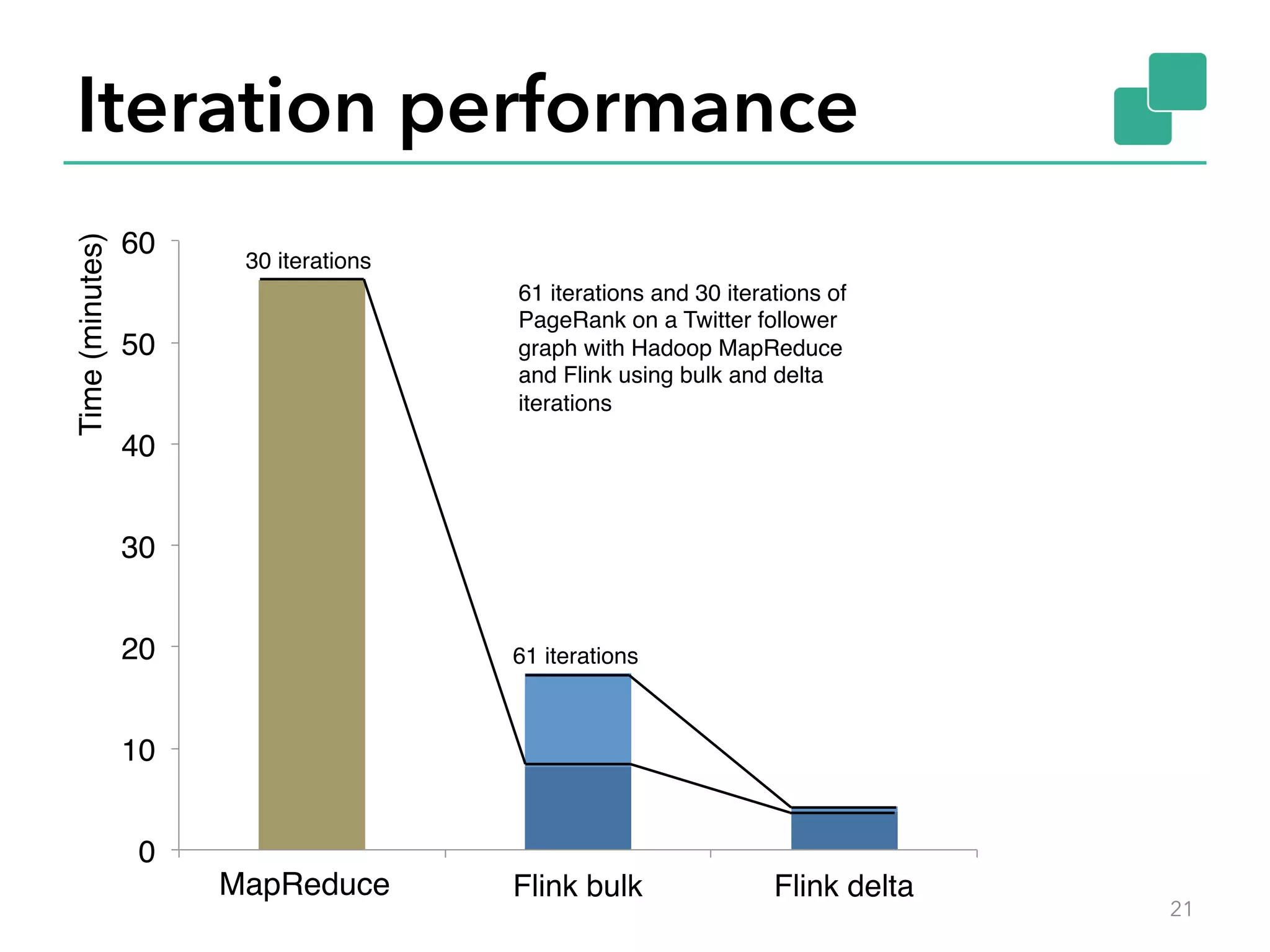
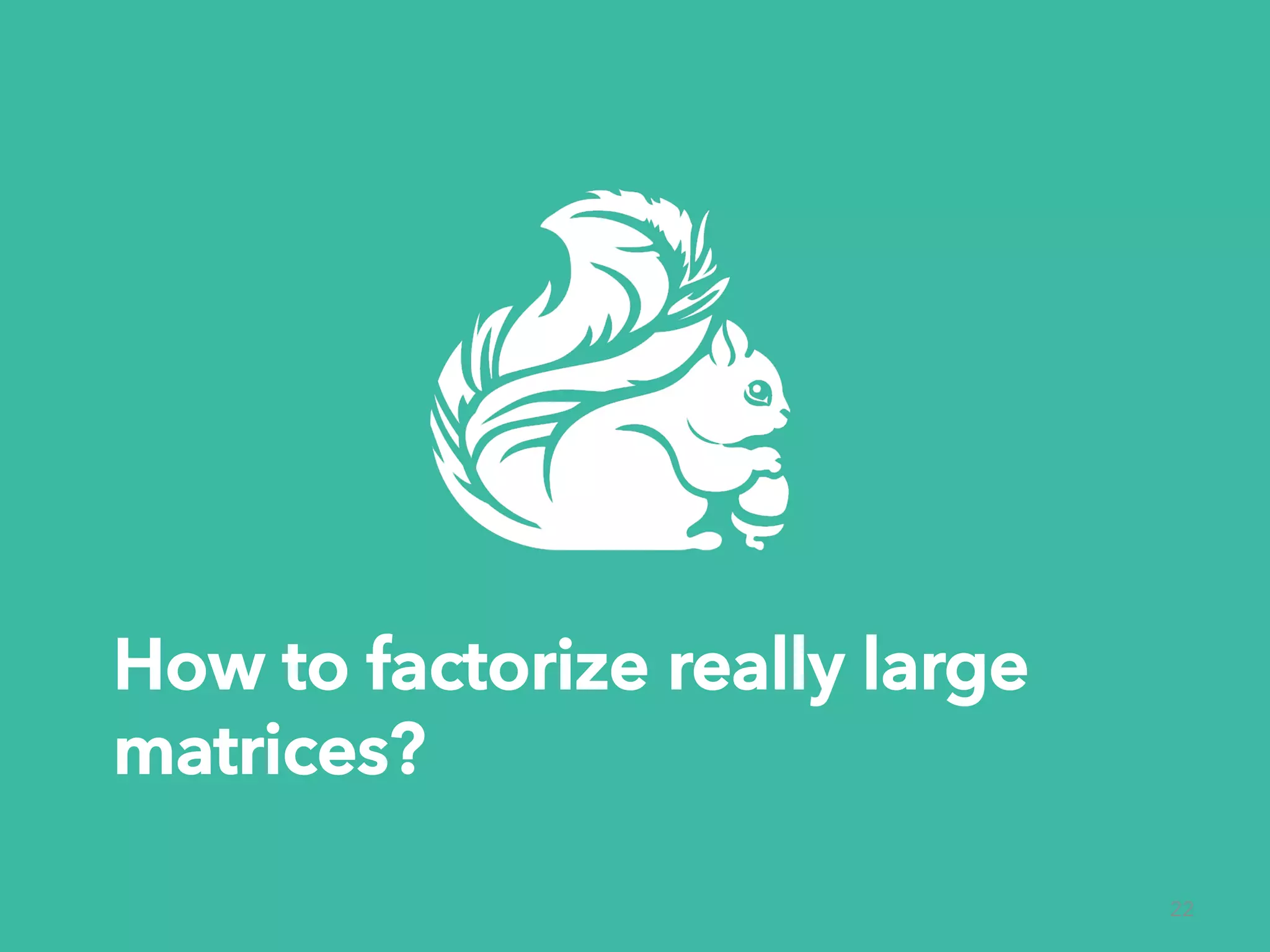
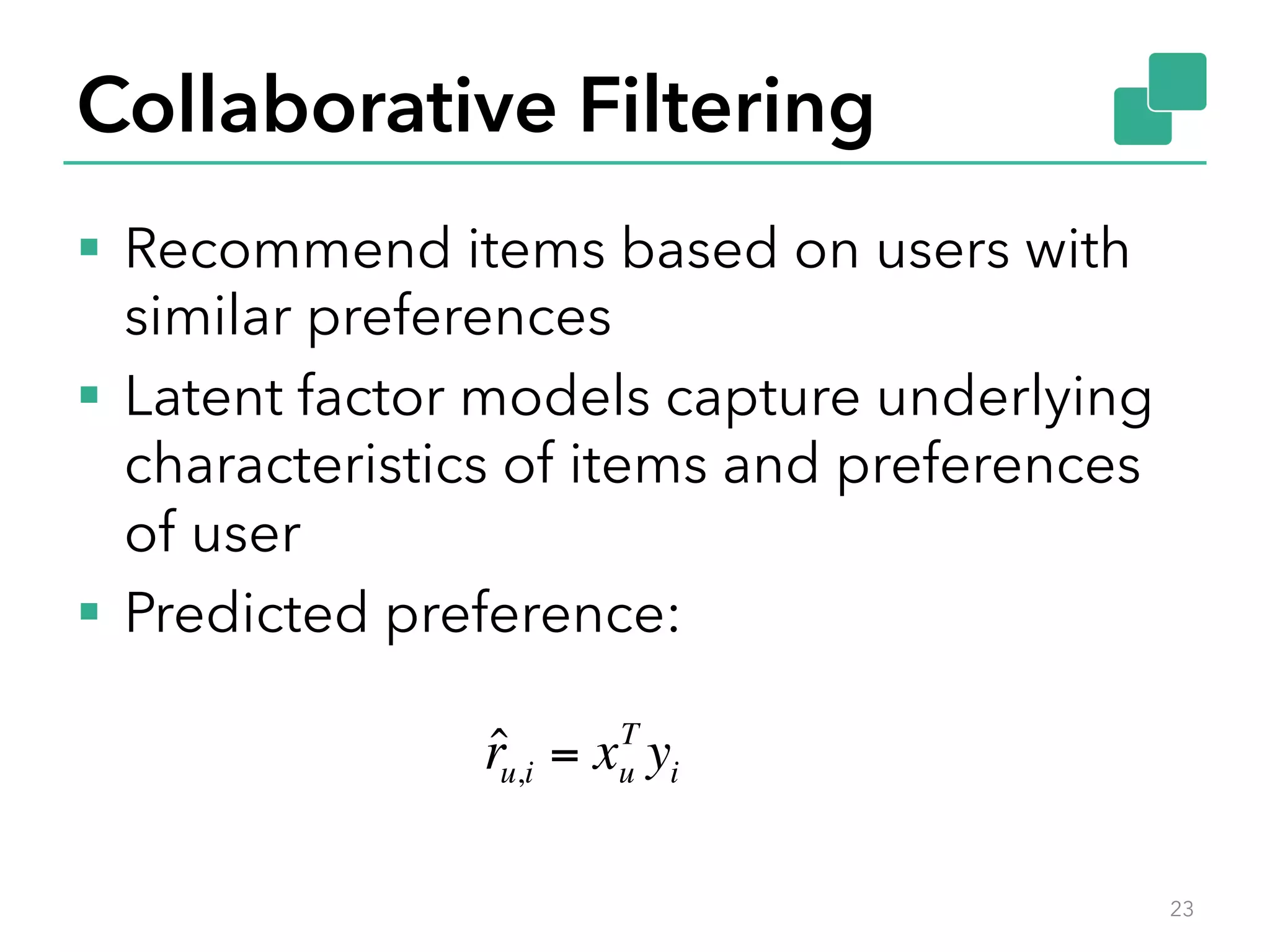
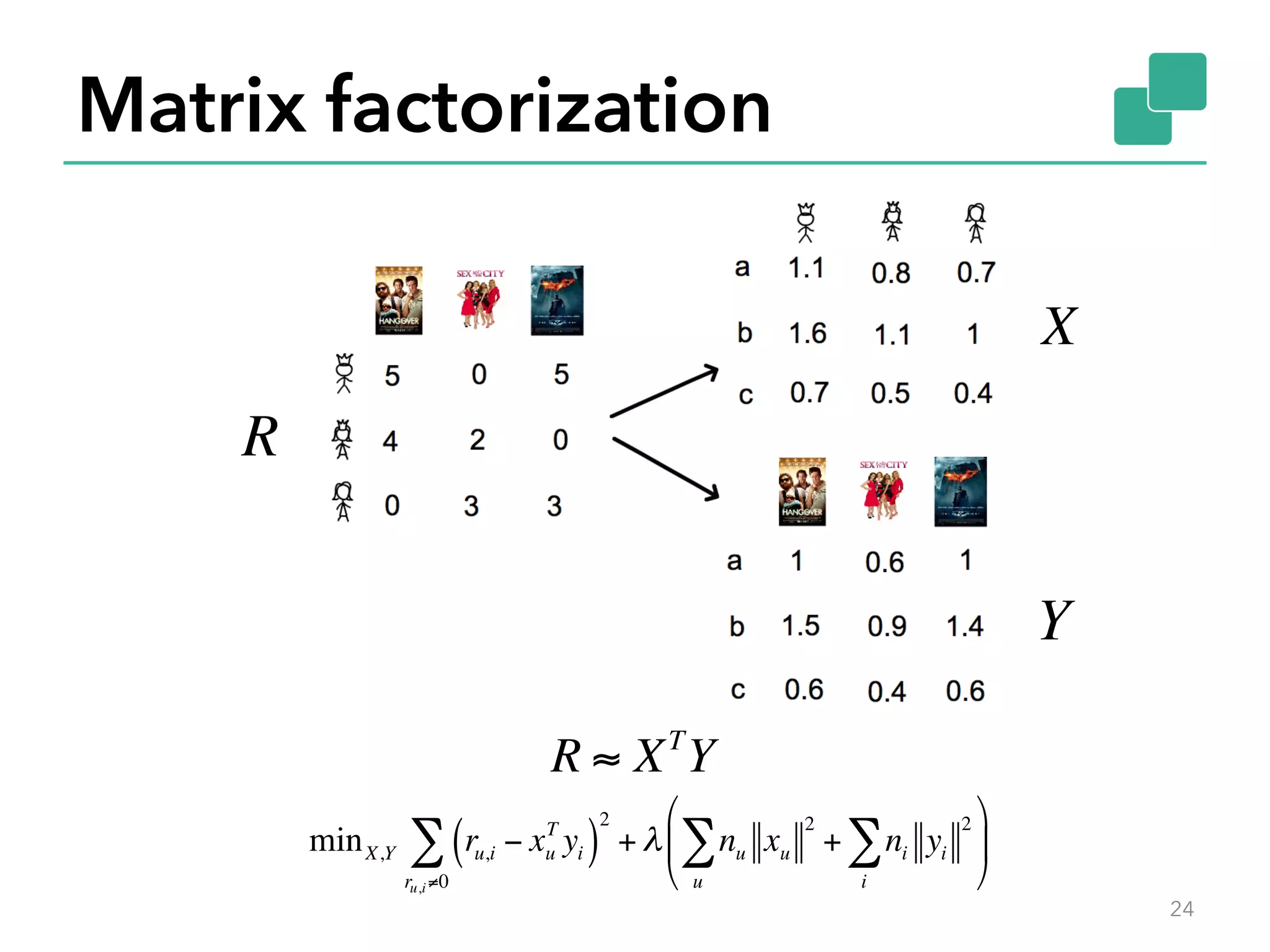
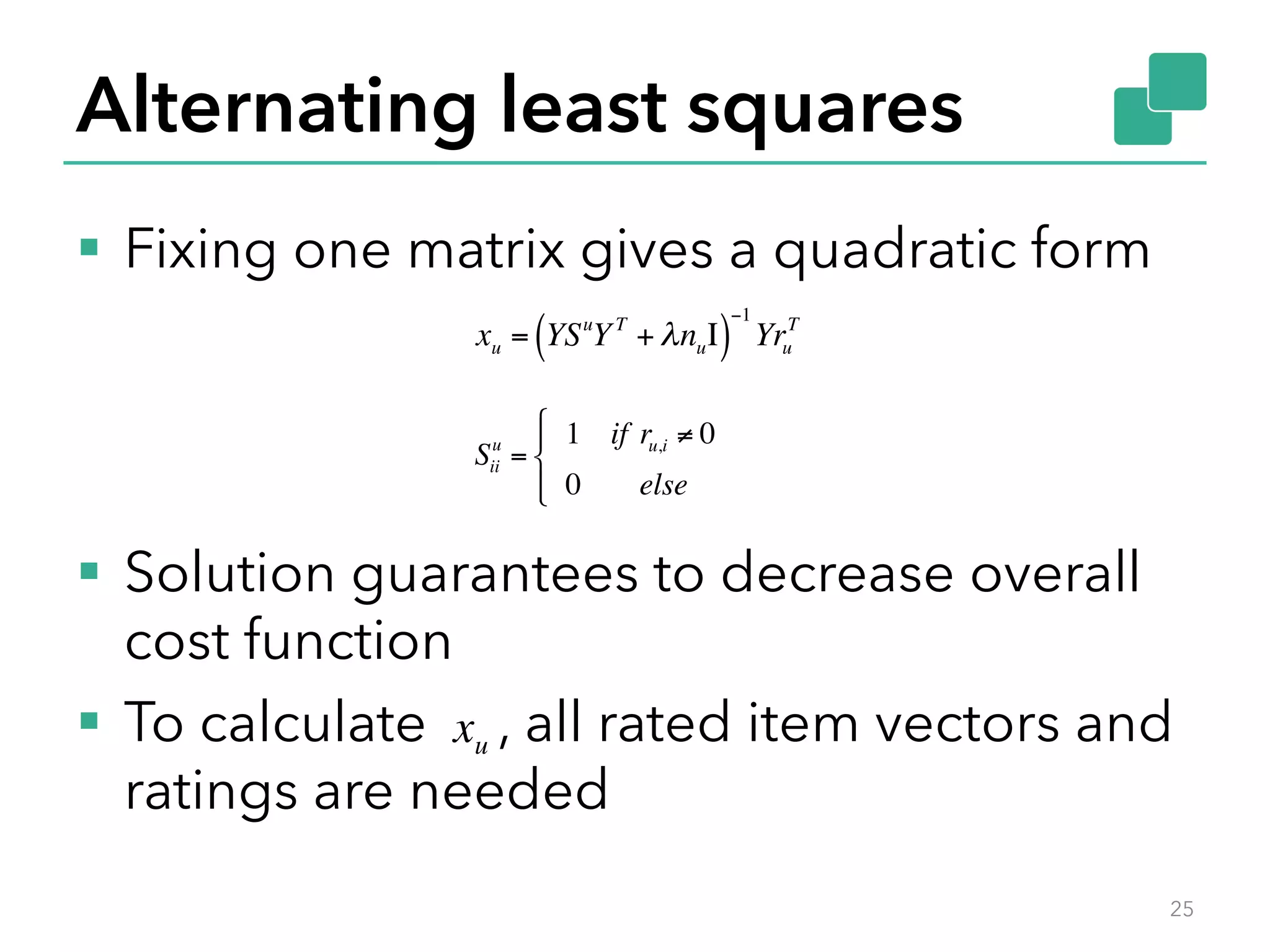
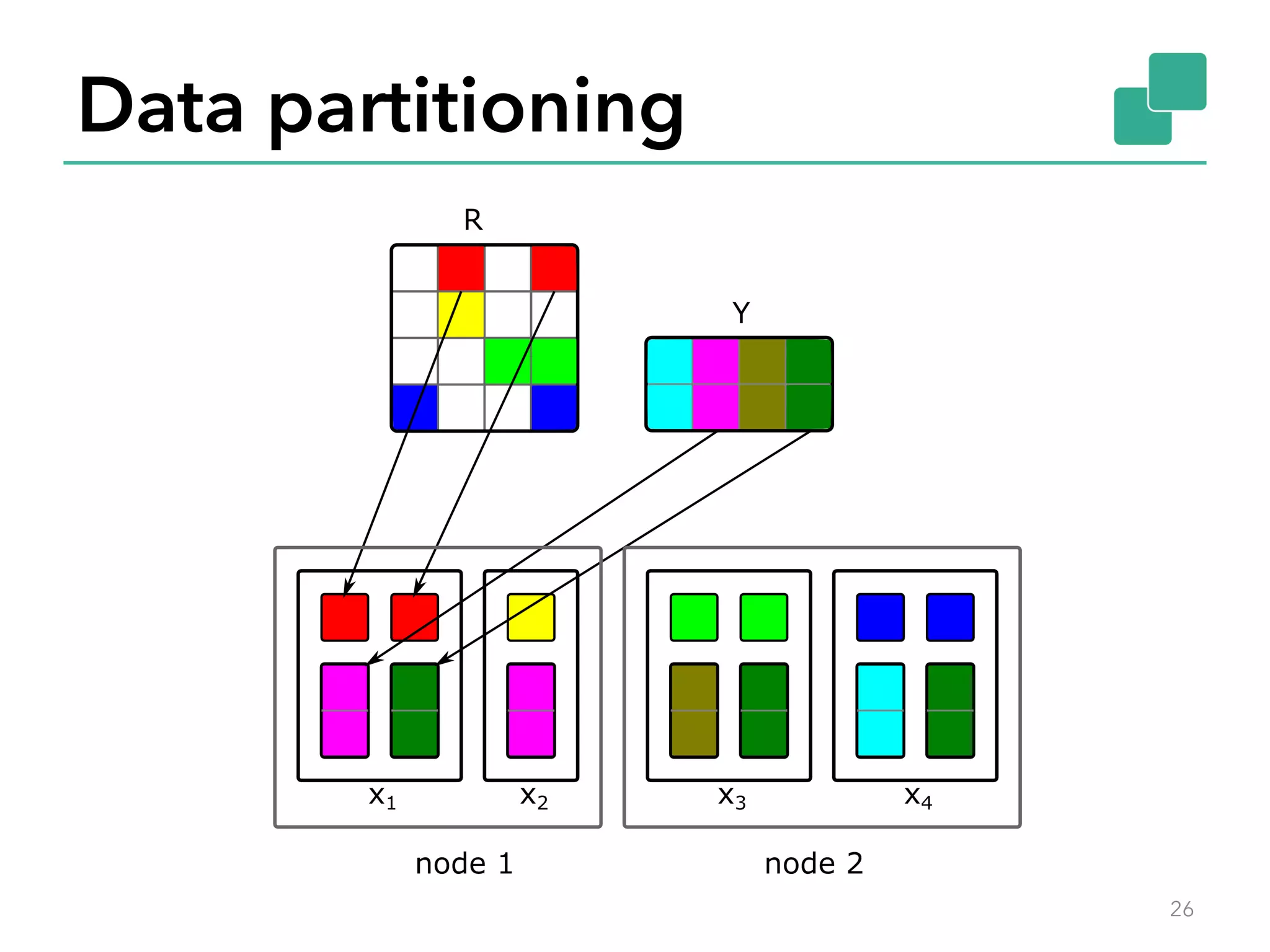
![Naïve ALS case class Rating(userID: Int, itemID: Int, rating: Double) case class ColumnVector(columnIndex: Int, vector: Array[Double]) val items: DataSet[ColumnVector] = _ val ratings: DataSet[Rating] = _ // Generate tuples of items with their ratings val uVA = items.join(ratings).where(0).equalTo(1) { (item, ratingEntry) => { val Rating(uID, _, rating) = ratingEntry (uID, rating, item.vector) } } 27](https://image.slidesharecdn.com/flinkstockholm-150324090049-conversion-gate01/75/Machine-Learning-with-Apache-Flink-at-Stockholm-Machine-Learning-Group-27-2048.jpg)
